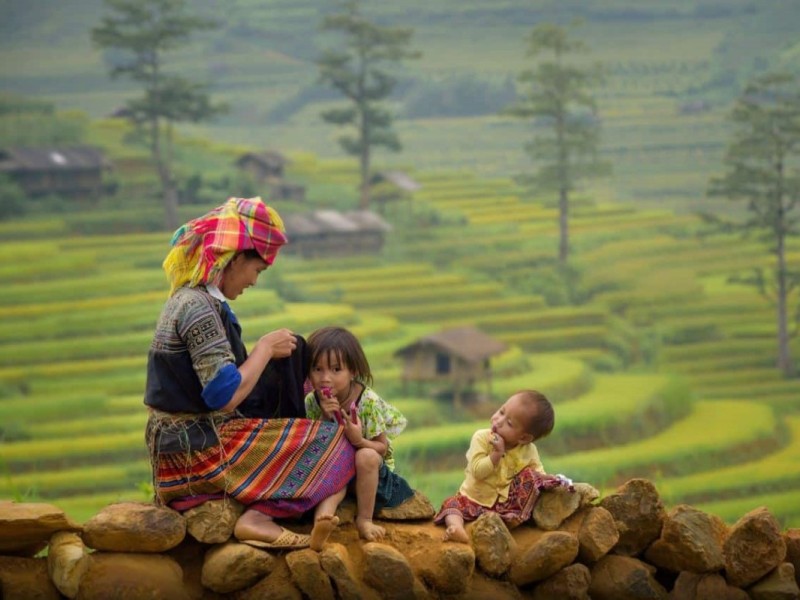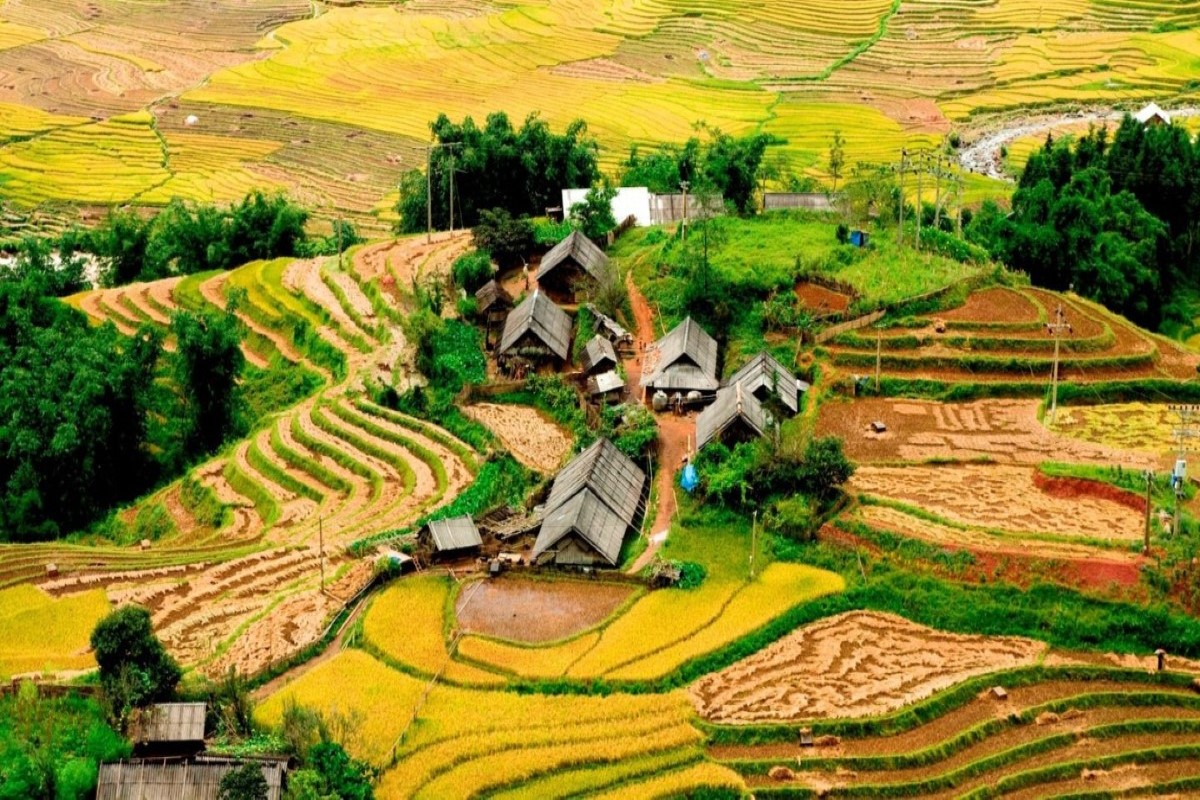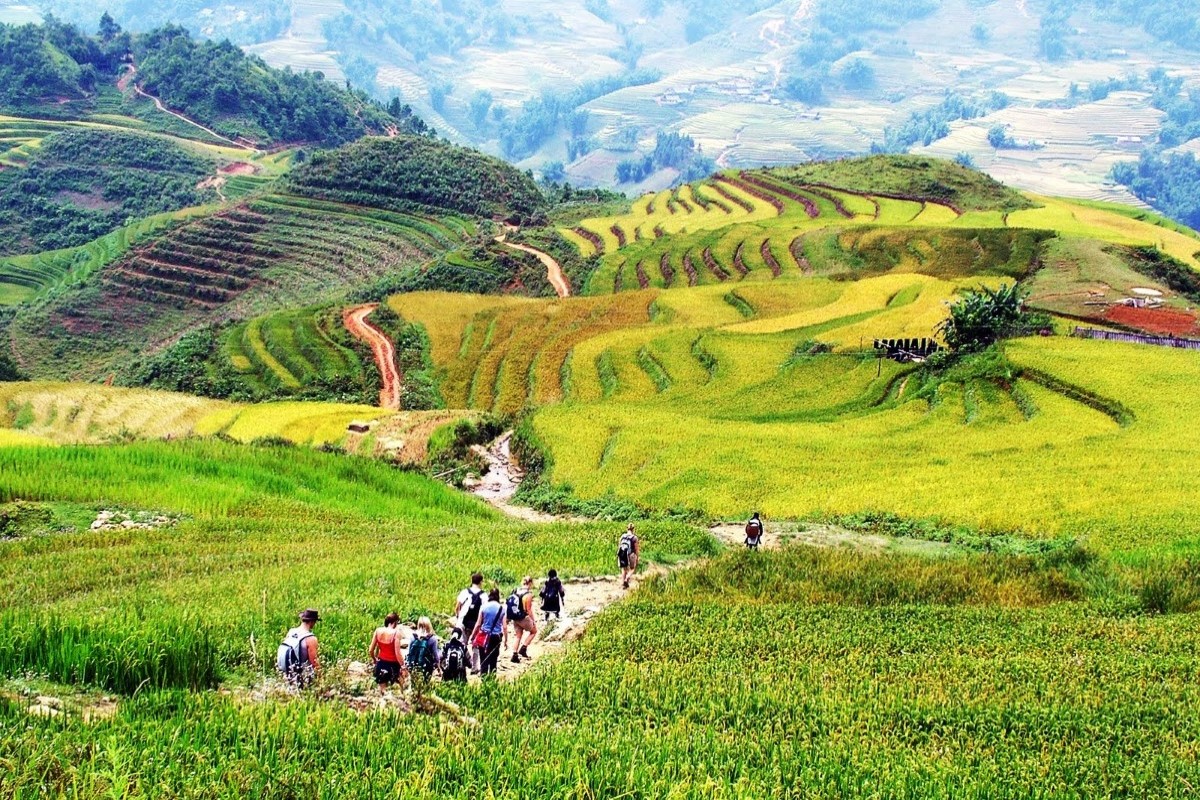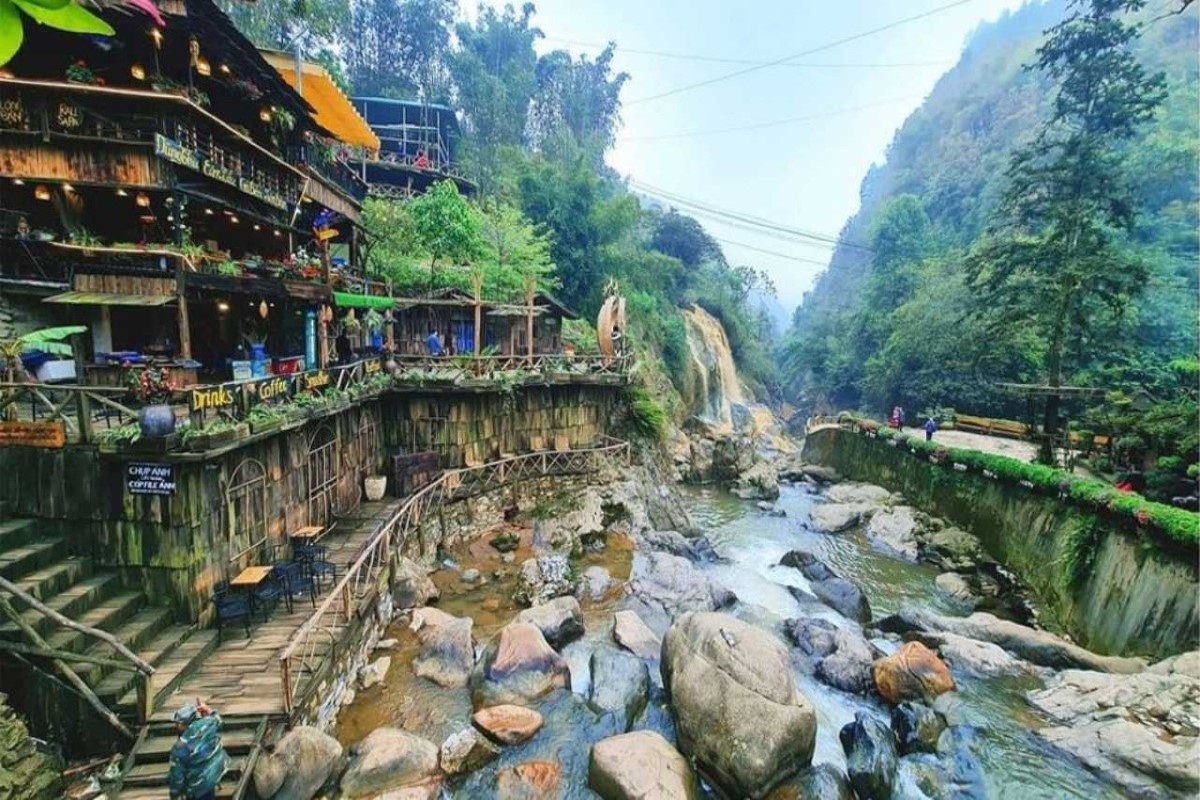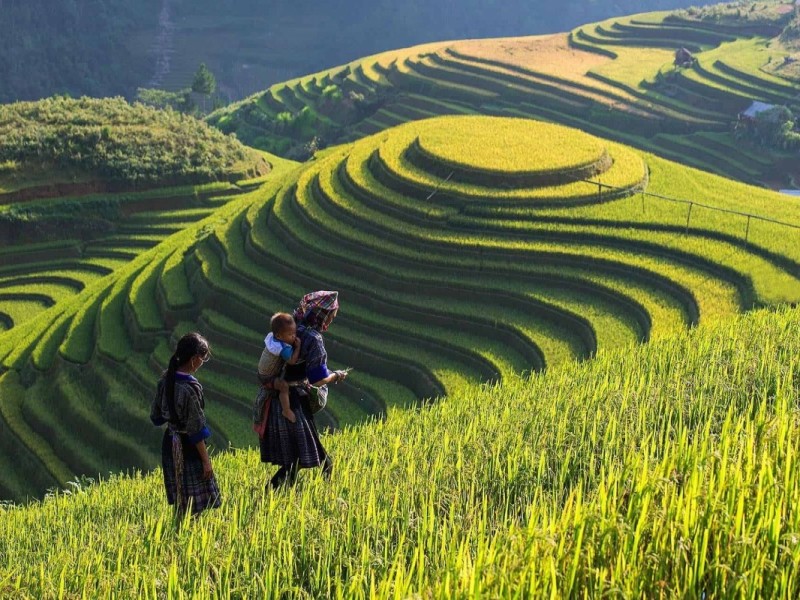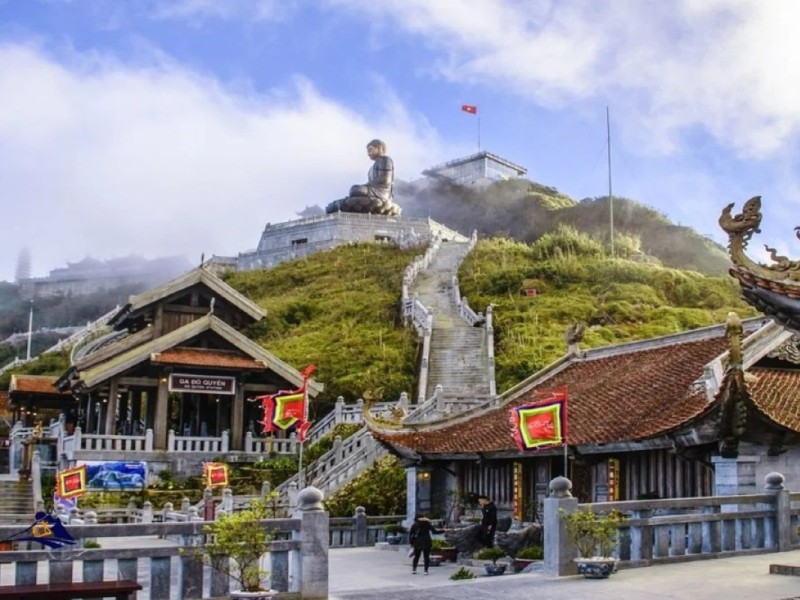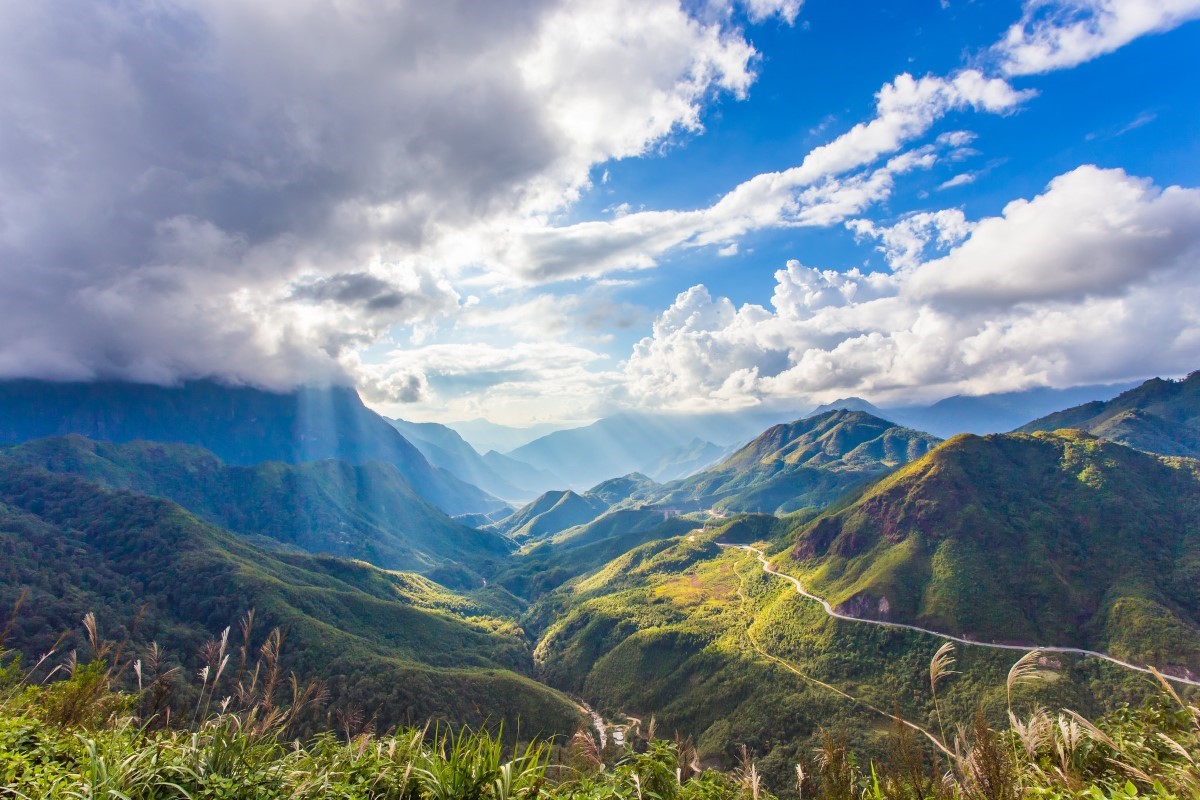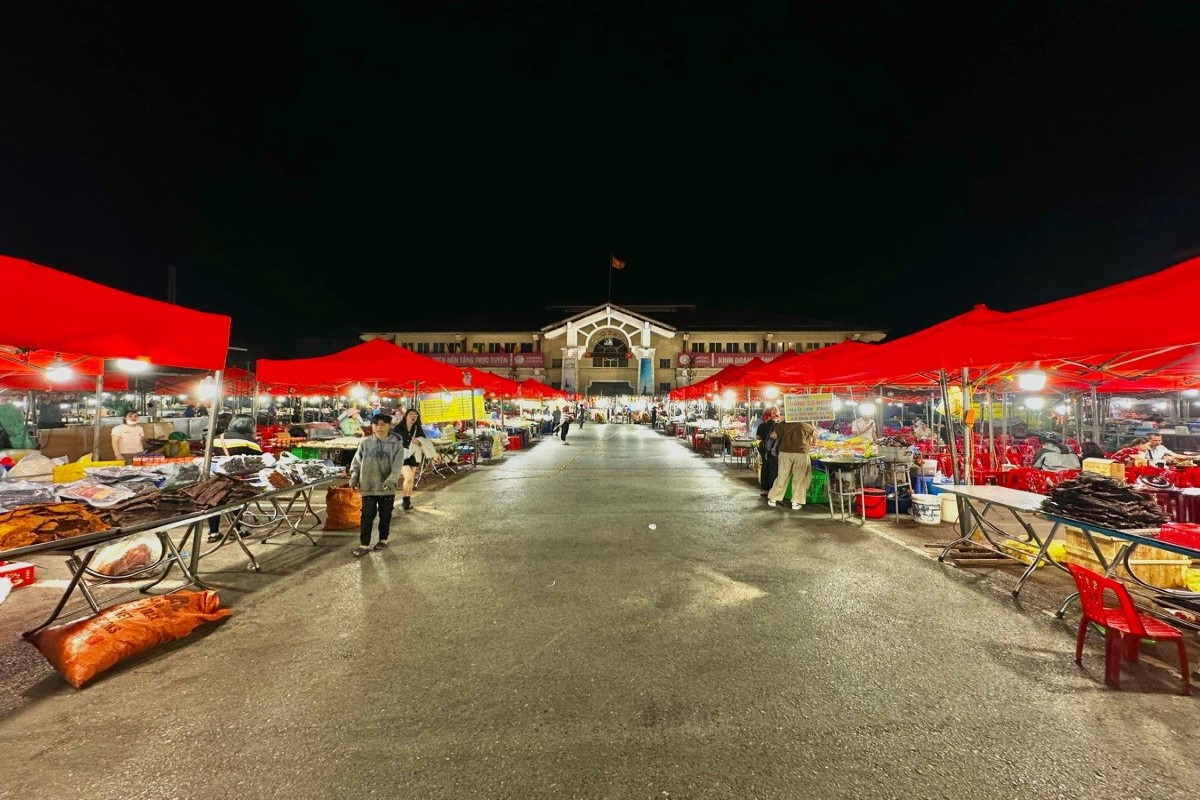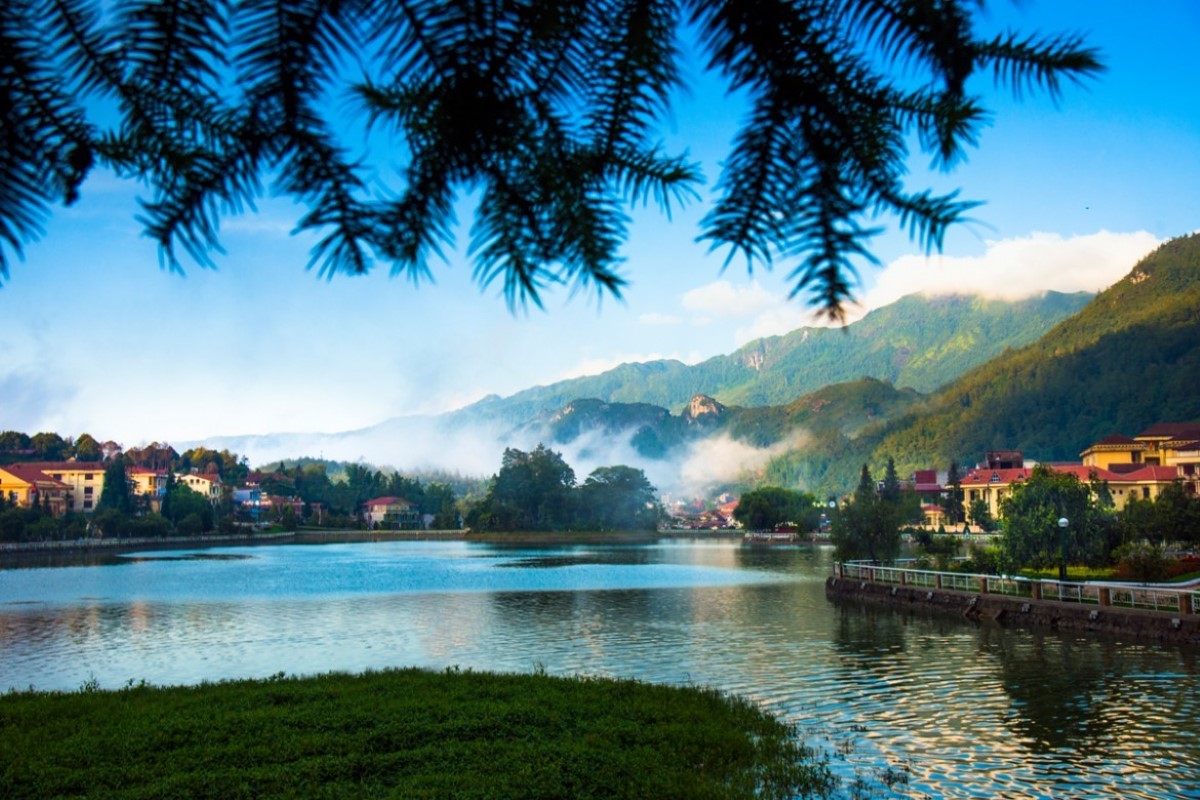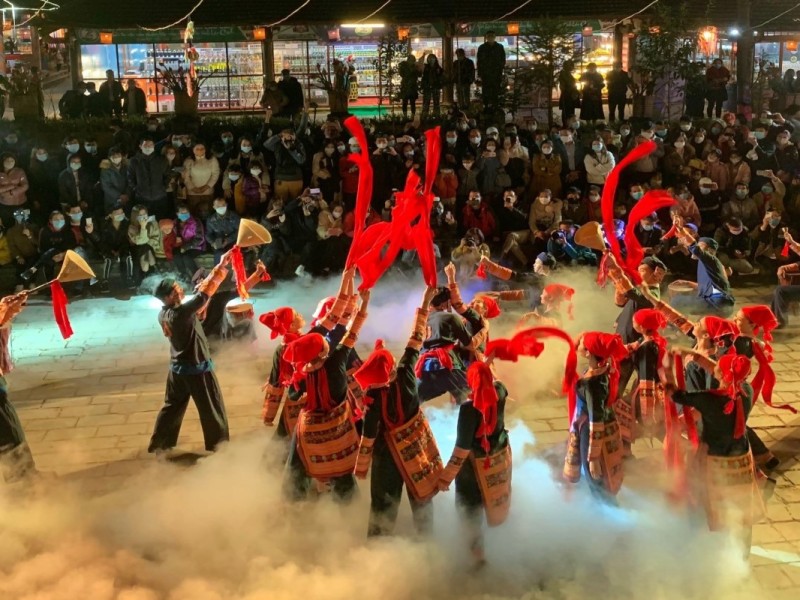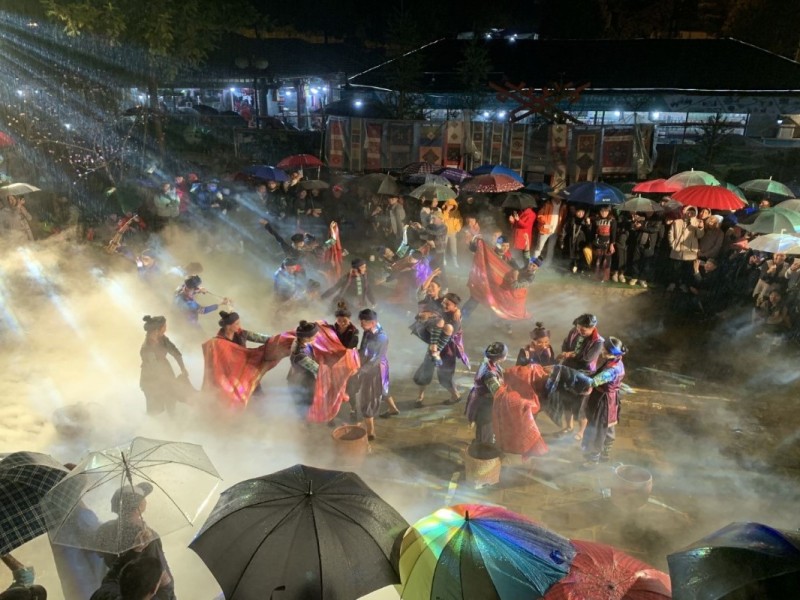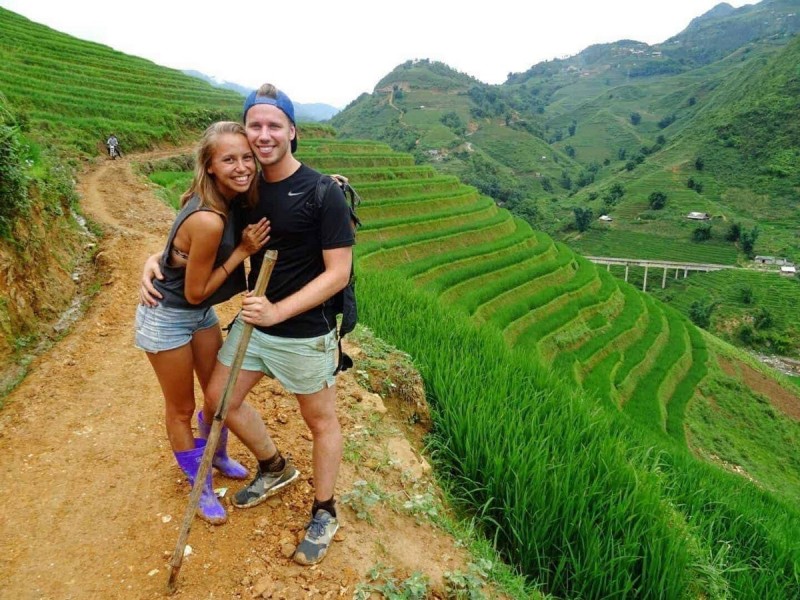Ham Rong Mountain Sapa: Complete Travel Guide, Top Activities & Tips
Ham Rong Mountain Sapa is a popular travel destination in northern Vietnam known for its panoramic mountain views, colorful flower gardens, and unique ethnic cultural performances. Visitors can enjoy easy hiking trails, breathtaking scenery, and vibrant local festivals, making Ham Rong Mountain an ideal spot for both nature lovers and cultural explorers.
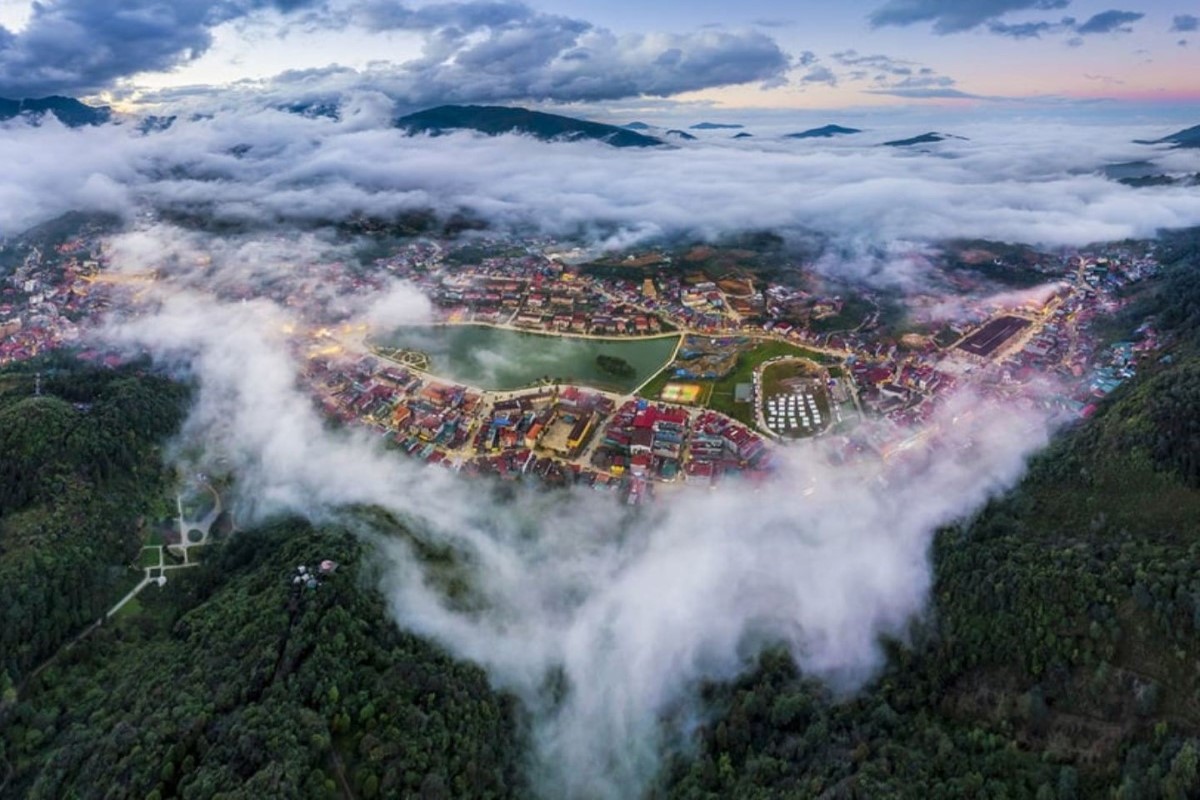
Discovering Ham Rong Mountain Sapa
From the first moment you set eyes on Ham Rong Mountain Sapa, its silhouette rising above the vibrant heart of Sapa, there’s a sense that you’ve arrived somewhere extraordinary. Wrapped in swirling clouds and set against a backdrop of lush, terraced hills, this iconic Sapa mountain feels at once wild and welcoming. Here, nature, culture, and legend blend together, inviting you to step into a world of panoramic views, blooming gardens, and timeless local stories. Whether you crave gentle exploration or breathtaking viewpoints, Ham Rong Mountain Sapa promises a travel experience that lingers long after you leave.
Let your curiosity guide you as you explore why Ham Rong Mountain Sapa is a highlight of northern Vietnam, and let this guide lead you to the very best the mountain offers.
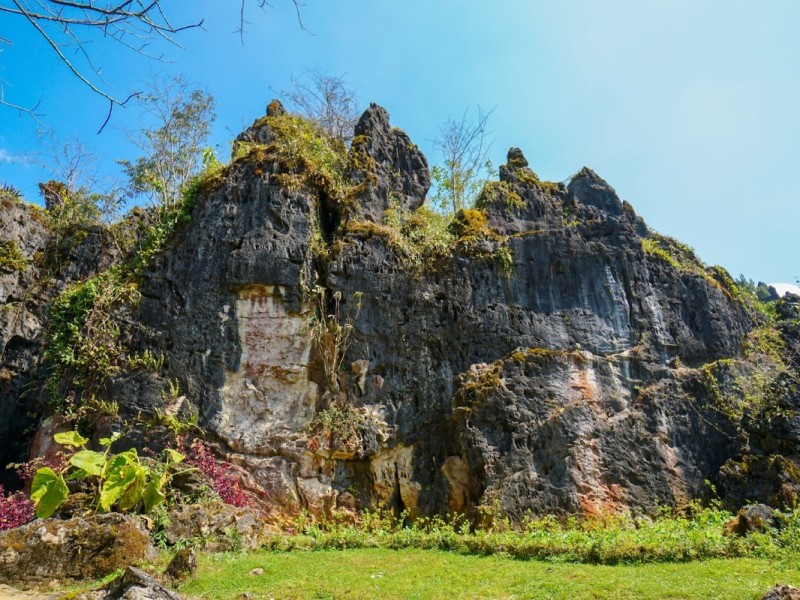
What Makes Ham Rong Mountain Sapa a Must-Visit in Sapa
Ham Rong Mountain Sapa stands out as a stairway to heaven for any traveler. Its unique combination of natural beauty and cultural experiences sets it apart among Sapa attractions. As you ascend the flower-lined paths, you’ll discover a living museum where every turn reveals another surprise—whether it’s a riot of colorful orchids, a vibrant ethnic performance, or the sweeping Sapa viewpoints that stretch across the valley.
Thanks to its gentle trails and well-marked routes, the mountain is accessible to all types of visitors. Solo explorers find quiet corners to reflect, while families and groups enjoy wide open spaces and shared discovery. Photographers and dreamers alike are drawn to the panoramic vistas at every stage of the climb. From easy walks to immersive cultural shows, the mountain caters to every pace, ensuring there are always unique things to do in Sapa for every traveler.
If you’re looking for a destination that combines natural wonders, cultural richness, and unbeatable accessibility, make time for Ham Rong Mountain Sapa—you’ll come away with stories and memories to share. Ready to plan your own adventure? Start building your Sapa travel dreams with Ham Rong Mountain Sapa at the top of your list.
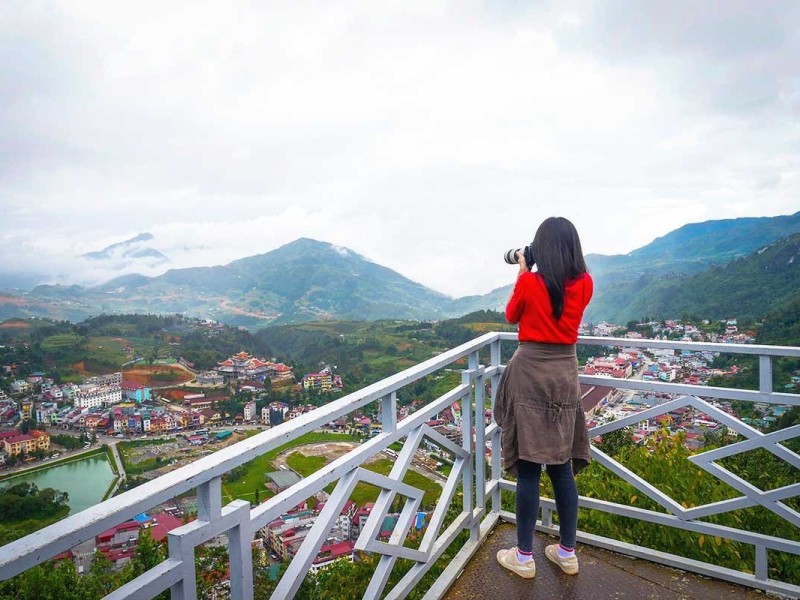
The Unique Legend and History Behind Ham Rong Mountain
There’s a sense of magic woven into every stone and pathway of Ham Rong Mountain Sapa. According to local legend, the mountain’s shape was formed by a dragon in love with a phoenix, their story forever carved into the landscape. This is how the peak earned its evocative name—Ham Rong, or "Dragon’s Jaw."
Generations of ethnic communities have passed down tales of the dragon mountain Sapa, keeping the folklore alive in daily rituals and annual festivals. The slopes were once the boundary between traditional villages, and today they serve as a cultural meeting point, echoing with the songs and dances of Sapa’s many ethnic groups. To walk these trails is to trace the living history of Sapa folklore and discover the spirit of resilience and unity that defines this region.
Every traveler who pauses to hear these stories connects with something deeper than the scenery alone. Visiting Ham Rong Mountain Sapa is not just about landscapes, but about joining the ongoing story of a place shaped by myth, memory, and tradition. Are you curious about the secrets that make Ham Rong Mountain Sapa so memorable? Dive into its legends and feel the heart of Sapa beat beneath your feet.
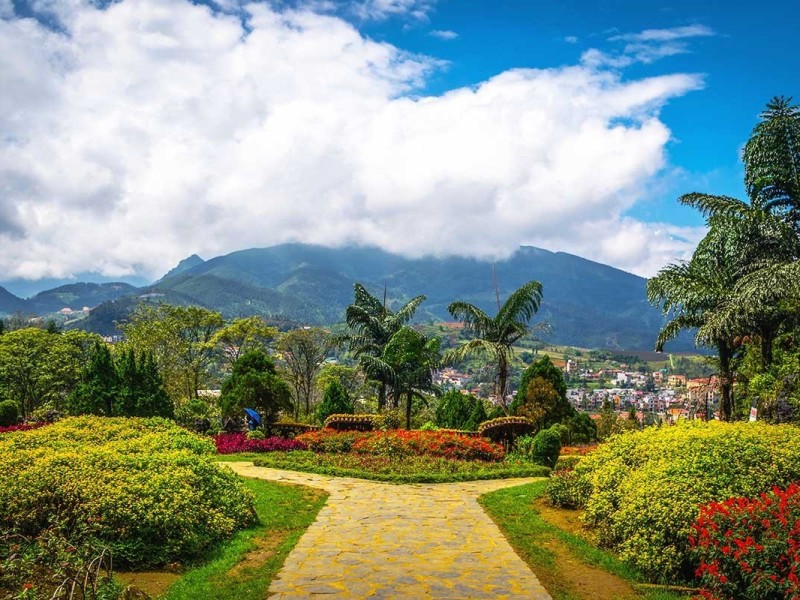
Where Exactly Is Ham Rong Mountain? (Address, Coordinates, and Getting Your Bearings)
For those ready to visit, finding Ham Rong Mountain Sapa couldn’t be easier. The mountain’s main entrance is just a short walk from the lively center of Sapa town, making it one of the most accessible nature escapes in the region. The official address is Ham Rong Mountain, Sapa Town, Sapa District, Lao Cai Province, Vietnam. For precise planning, use these GPS coordinates: 22.3361° N, 103.8437° E.
Because of its central location, visitors can transition from the buzz of Sapa’s markets straight into the tranquil embrace of the mountain within minutes. The entrance is well marked, and local signage or a quick glance at a Ham Rong Sapa map will point you in the right direction. If you’re wondering how to find Ham Rong, trust that you’re never far away when in Sapa.
With such easy logistics, you can fit Ham Rong Mountain Sapa into even a short stay in town. Check your map, note the coordinates, and get ready for a mountain adventure right in the heart of Sapa. If you need local advice or help with planning, reach out to us at Asia Travel Links anytime.
Pinpointing Ham Rong on the Sapa Map
Finding your way to Ham Rong Mountain Sapa is simple with a little visual orientation. Here’s how to spot it and reach the entrance:
- Central Sapa Landmark: Look for the towering Sapa Stone Church in the town’s main square—it’s your best starting point.
- Main Route: From the church, head up Fansipan Road for about 300 meters until you see signage for Ham Rong Mountain Sapa.
- Nearby Hotels: Popular stays like Victoria Sapa Resort & Spa are just minutes from the gate.
- Clear Signage: Directional signs are visible along the main roads and at key intersections.
- Town Map Reference: Many local maps and tourist brochures feature the mountain’s exact location for easy self-navigation.
With these clear steps and familiar landmarks, you’ll find yourself at the mountain’s entrance in no time, ready to begin your journey.
You can always ask a local for quick guidance—Sapa’s hospitality is as warm as its scenery.
Main Landmarks and How to Find the Entrance
For first-time visitors, these easy-to-spot landmarks make finding the entrance to Ham Rong Mountain Sapa stress-free:
- Sapa Stone Church: The iconic, French-era stone building is the best-known meeting point in town.
- Town Center Square: The public plaza hosts markets, events, and is a natural gathering spot just steps from the mountain’s gate.
- Fansipan Road: This main street leads directly to the base of Ham Rong Mountain Sapa—just follow the gradual incline.
- Hotels and Cafés: Establishments like the Sapa Legend Hotel & Spa or Café in the Clouds are within a five-minute walk.
- Entrance Signage: Look for the bold, arching entrance sign that marks the official start of your Ham Rong journey.
To reach the gate, start at the Sapa Stone Church, walk towards Fansipan Road, and follow the crowd of fellow explorers. It’s a quick and scenic stroll that transitions you from Sapa’s lively streets to the peaceful pathways of the mountain.
Once you reach the entrance, you’re just steps away from the stunning views and vibrant culture that make Ham Rong Mountain Sapa an essential stop in northern Vietnam. If you ever feel unsure, don’t hesitate to ask a shopkeeper or guide along the way—they’re always happy to help.
Ready to set out? Let us at Asia Travel Links help with local directions, tips, or even a guided introduction to Ham Rong Mountain Sapa if you want extra insight for your first visit.
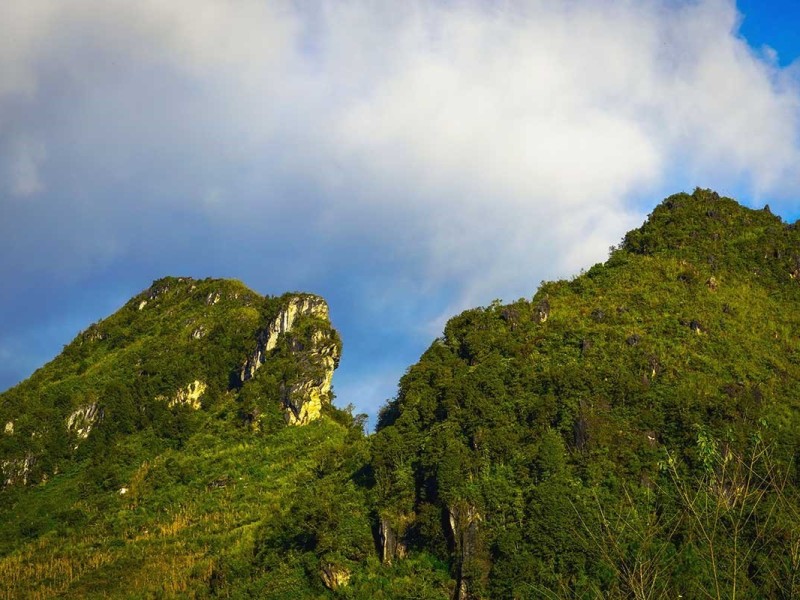
Planning Your Ham Rong Mountain Sapa Adventure: Essential Pre-Trip Details
Careful planning can make your visit to Ham Rong Mountain Sapa seamless and unforgettable. Knowing what to expect in terms of weather, bloom seasons, and local events will help you time your trip for the most vivid landscapes and meaningful experiences. From packing tips to festival dates, this section gives you the confidence to prepare, so you can focus on the excitement of exploring Sapa.
With the right information, you’ll feel ready for every step of your journey and get the best out of every moment at Ham Rong Mountain Sapa. If you ever need tailored advice or a custom itinerary, Asia Travel Links is here to help you plan your perfect Sapa adventure.
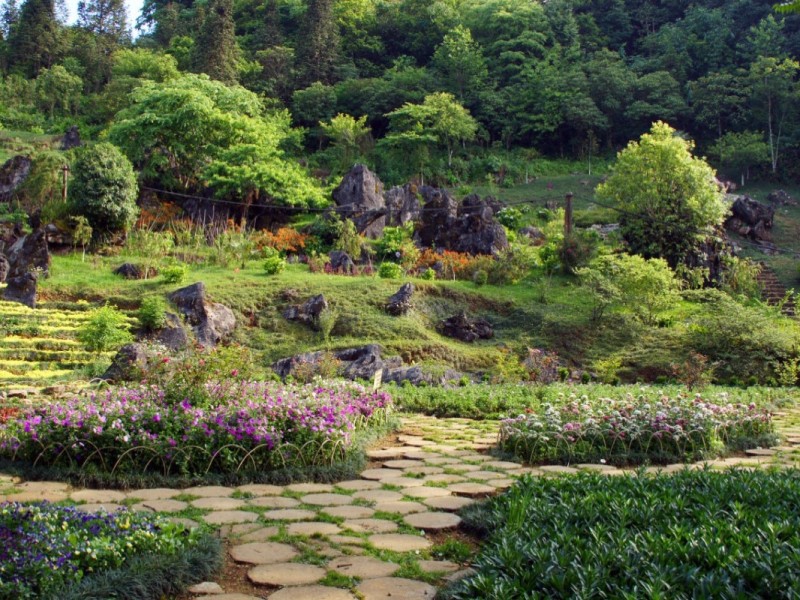
Best Times of Year (and Day) to Visit for Weather, Views, and Events
The best time to visit Ham Rong Sapa is during the dry season, from October to April, when skies are clear and the landscape is lush. Days are cool, crisp, and ideal for hiking, while the nights bring a gentle chill that makes Sapa’s mountain air feel fresh and invigorating. Spring, from February through April, offers the peak Ham Rong flower season when orchids and other blooms turn the gardens into a painter’s palette.
If you’re hoping to capture the magic of the mountains in your photos, plan your visit for sunrise or sunset. Early mornings reveal Ham Rong Mountain Sapa in soft gold and pink, often with drifting mists, while late afternoons offer long shadows and a quiet, crowd-free atmosphere. For those who want to avoid crowds Ham Rong is least busy on weekdays and outside of major Vietnamese holidays, especially early in the morning or mid-afternoon.
Here’s a quick reference calendar to help you plan for Sapa weather Ham Rong, seasonal highlights, and events:
- October–April: Dry season; best weather for trekking, viewpoints, and outdoor events.
- February–April: Peak bloom for orchids and most vibrant gardens.
- May–September: Rainy season; lush landscapes but frequent afternoon showers—great for solitude and cooler hikes.
- Sunrise (5:30–6:30am): Magical light, fewest visitors, ideal for photographers.
- Sunset (5:00–6:30pm): Warm tones, peaceful views, relaxed atmosphere.
Whenever you choose to go, prepare for shifting mountain weather by dressing in layers and checking daily forecasts. Still unsure about the right dates? Email us for personalized advice and the latest on events or weather.
Flower Seasons, Festival Dates, and Insider Timing Advice
Each season at Ham Rong Mountain Sapa brings something special. Here’s how to catch the best blooms and local festivities:
- Orchid Bloom (March–April): Gardens burst into color with rare and native orchids, peaking just before the April rains.
- Peach Blossom Season (Late January–February): Trees blush pink before Tet, Vietnam’s Lunar New Year.
- Sapa Flower Festivals (April and September): Local celebrations showcase traditional costumes, music, and incredible displays of flowers.
- Ham Rong Mountain Events: Occasional weekend folk performances and cultural fairs at the summit amphitheater, especially during holidays or local festivals.
- Sapa Love Market (Saturday nights, year-round): Not on the mountain but easily combined; ethnic minorities gather to trade, court, and perform traditional music in central Sapa.
Planning your visit around these events adds a vibrant layer to your experience, blending nature’s beauty with Sapa’s living traditions. Local guides often have the freshest details on spontaneous performances or pop-up events.
Time your trip for an orchid-filled stroll or the buzz of a festival, and you’ll see Sapa at its liveliest. Want up-to-date bloom forecasts or event tips? Reach out to Asia Travel Links and let us help you plan for something truly memorable.
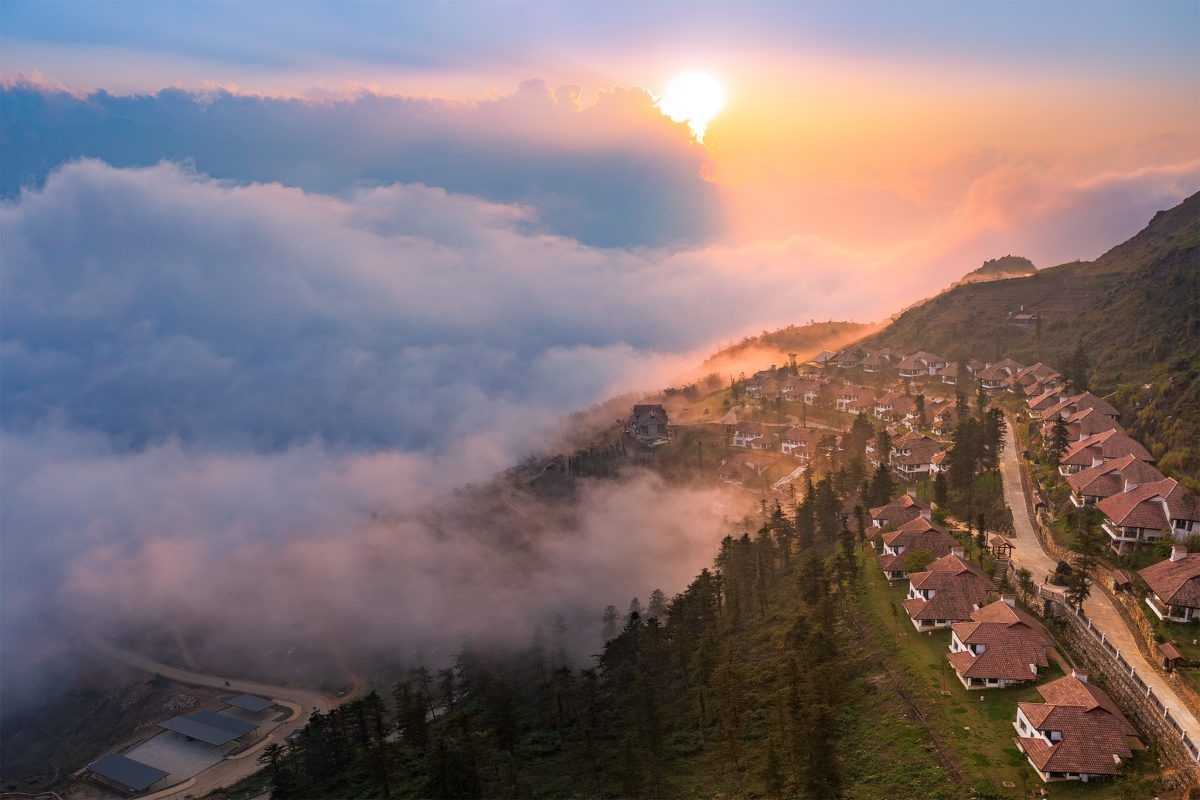
Recommended Gear for a Comfortable Ascent
Wondering what to wear Ham Rong and how to pack for a smooth day on the mountain? Preparation is the secret to enjoying everything Ham Rong Mountain Sapa offers—no matter the weather or your hiking experience. Having the right Sapa hiking gear ensures you’re comfortable, safe, and ready to focus on the views instead of the conditions.
Use this Ham Rong packing list as your essential guide:
- Layered Clothing: Mornings and evenings are chilly, while midday can warm up quickly. Pack a lightweight base layer, a fleece or sweater, and a windbreaker or light jacket. If you’re visiting during the rainy season, add a compact rain poncho.
- Comfortable Hiking Shoes: Good grip and ankle support are crucial. The trails can be slick after rain or in shady, mossy areas. Avoid sandals or city shoes.
- Sun Protection: Bring a hat, sunglasses, and a broad-spectrum sunscreen. The mountain air is fresh but the UV index is strong at altitude.
- Rain Gear: A waterproof jacket or small umbrella is essential from May through September, when showers are frequent.
- Insect Repellent: Mosquitoes and other insects are most active in the gardens, especially during humid months.
- Reusable Water Bottle: Hydration is key. Refill before you enter the park, as there are few water stations along the trails.
- Healthy Snacks: Carry lightweight snacks—nuts, dried fruit, or a small energy bar—for a boost at viewpoints or after climbing the steps.
- Camera or Smartphone: The panoramic vistas and flower gardens are worth every shot. Bring extra batteries or a power bank if you plan to spend the whole day.
Packing these travel essentials means you can adapt to shifting weather, stay energized, and capture every moment with comfort and confidence. Still need tips on Sapa hiking gear for your specific travel dates? Contact us at Asia Travel Links for a custom checklist or gear recommendations for your trip to Ham Rong Mountain Sapa.
Oliver's Packing Blunder & Lesson Learned: What I Wish I'd Brought
Most packing lists feel like a detached, clinical exercise, a chore before the fun begins. But trust me, after my recent adventure up Ham Rong Mountain in Sapa, I now view packing with a newfound reverence, especially when dealing with Vietnam's unpredictable mountain weather. My journey up Ham Rong was spectacular, but it was also a masterclass in what not to forget, a lesson etched into my memory through unexpected chills and soggy socks. This wasn't just another hike; it was a vivid demonstration of how quickly comfort can turn to clammy discomfort if you're not properly prepared for Sapa's unique microclimates.
The morning started deceptively bright and warm in Sapa town. I’d checked the forecast, which optimistically predicted "partly cloudy." So, in my infinite wisdom, I grabbed my light fleece and left my trusty waterproof jacket back at the hotel. After all, the sun was peeking through, and the air felt crisp and invigorating. My anticipation buzzed as I began the ascent, the vibrant flower gardens already a riot of color, and the distant views of terraced rice fields hazy with morning mist. The initial climb was exhilarating, a gentle incline through the King Garden, past the Stone Forest, with the sweet scent of orchids filling the air. I was feeling smug about my minimalist approach.
Then, as I neared the Cloud Yard, the air thickened. A damp, cool breath swept across the mountain, quickly followed by a fine, persistent drizzle that seemed to seep into everything. The "partly cloudy" forecast had evidently undersold Sapa’s famous mists. Within minutes, the light fleece I was wearing felt woefully inadequate. The cheerful "drip, drip, drip" turned into a steady patter, and the thin fabric of my hiking pants clung uncomfortably to my legs. My "water-resistant" shoes, which had performed admirably on dry city streets, were now squelching with every step, and a creeping chill started to set in. My fingers grew numb as I tried to snap photos, the mist-laden landscape beautiful but biting. My meticulously planned photo ops became a fumbling attempt to keep my phone dry while shivering. The magic of the Cloud Yard was still undeniable, but my physical discomfort certainly dampened the ethereal experience. I vividly remember hunching my shoulders, trying to shrink away from the dampness, wishing for nothing more than a dry layer and a pair of truly waterproof boots. The lesson was sharp and immediate: Sapa’s mountains demand respect for their capricious nature.
My unintended "wet look" taught me some invaluable, firsthand lessons. You can’t fully immerse yourself in the awe-inspiring beauty of Ham Rong if you’re constantly battling the cold or squishing through puddles.
Here are my hard-won, actionable practical takeaways:
- Layer Up, Seriously: Don't just bring one warm layer. Pack multiple light layers that you can add or remove. A thin base layer, a fleece, and crucially, a waterproof and windproof outer shell are non-negotiable, even if the forecast looks clear.
- Waterproof Footwear is Your Best Friend: Leave the fashionable sneakers for the city. Invest in waterproof hiking shoes or boots with good grip. The trails can be damp and slippery, especially after a drizzle. Your feet will thank you.
- Small Umbrella or Rain Poncho: Even if you have a waterproof jacket, a compact umbrella or a lightweight poncho can be a lifesaver for sudden showers, especially if you want to keep your camera or phone dry while still enjoying the views.
- Ziploc Bags/Dry Bags: Protect your electronics (phone, power bank, camera) from unexpected moisture. Sapa's mist is beautiful but insidious.
- Warm Hat and Gloves: Even in warmer months, the mountain air can be surprisingly cool, especially when combined with mist or wind. These small items make a huge difference to overall comfort.
- Snacks and Water: While there are vendors, having your own energy bars and enough water means you won't be caught off guard if you wander off the main path.
Despite my little packing mishap, Ham Rong Mountain was undeniably breathtaking. The vibrant flowers, the mystical Cloud Yard, and the sweeping views of the valley were truly unforgettable. My discomfort was a small price to pay for such a profound appreciation of nature's power and a reminder that preparing wisely enhances the joy of discovery.
Recommendation: Don't make my mistake! Pack smart for Ham Rong Mountain, and you’ll unlock an even more comfortable and fully immersive experience. Go prepared, and you'll find yourself completely present to soak in every stunning vista and unique cultural nuance this magnificent Sapa gem has to offer. You absolutely must experience the magic of Ham Rong – just remember your waterproofs!
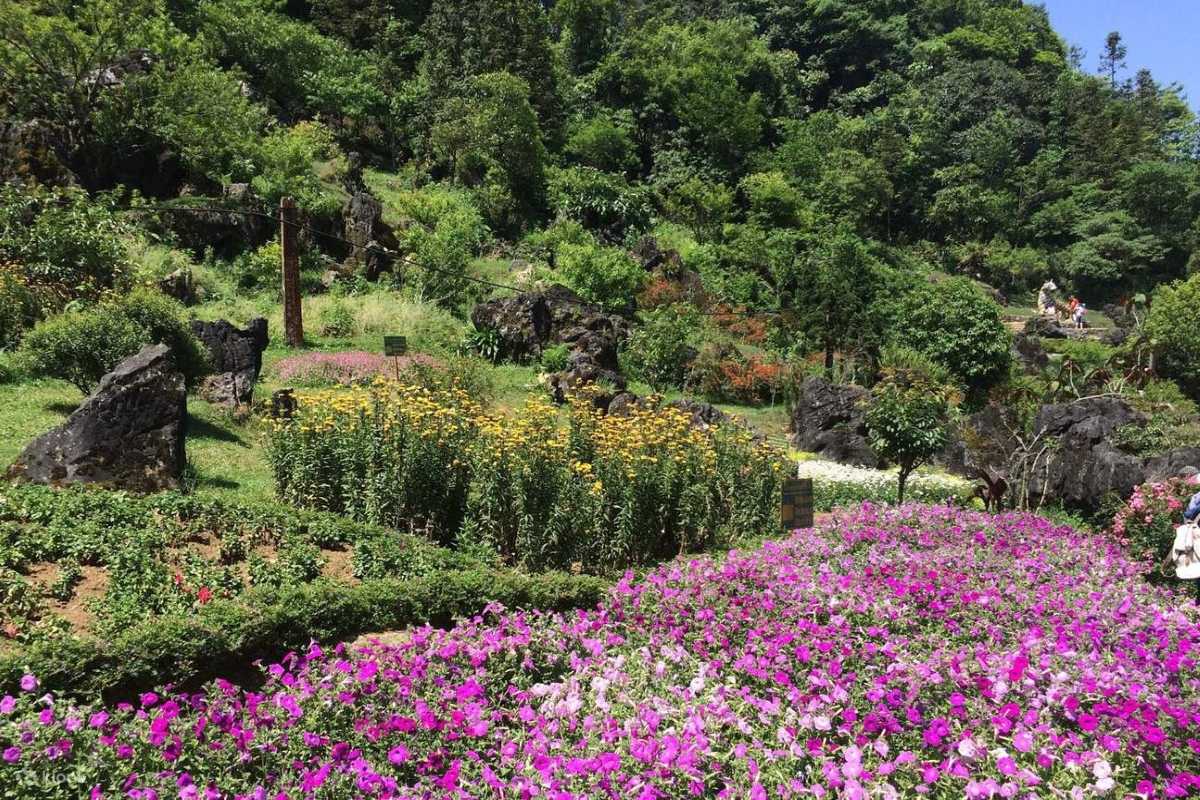
Getting to Ham Rong Mountain — Your Essential Transport Guide
Reaching Sapa and planning your route to Ham Rong Mountain is easier than you might think. With several transport options from Vietnam’s main cities and plenty of expert advice along the way, your journey to the mountains can be smooth and stress-free. Understanding the logistics empowers you to focus on the excitement of discovery instead of the uncertainty of travel.
Whether you’re coming from Hanoi, Lao Cai, or another Vietnamese hub, you’ll find multiple Sapa transport options to fit your style, budget, and travel timeline. If you need personalized recommendations or help booking, the team at Asia Travel Links is always available to make your trip seamless.
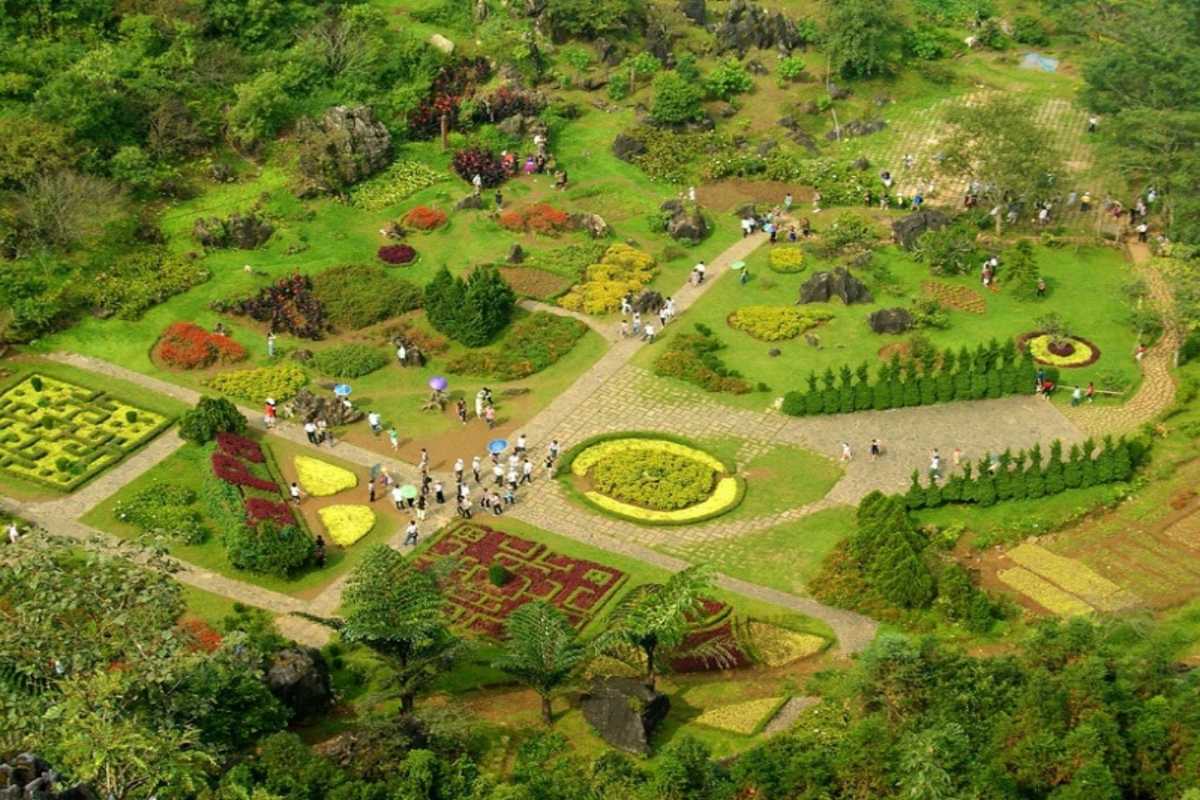
How to Reach Sapa from Major Vietnamese Cities
Wondering how to get to Sapa? There are several tried-and-true options from Hanoi, Lao Cai, and other major cities—each with its own pros and cons. Here’s a quick breakdown to help you decide:
- Train from Hanoi to Sapa: This classic route involves an overnight sleeper train from Hanoi to Lao Cai, followed by a scenic one-hour drive up to Sapa town. Trains are comfortable, safe, and a great way to experience the northern countryside. Most journeys depart in the evening and arrive early morning. Estimated total travel time: 8–9 hours. Price: $20–$40 (USD) for soft sleepers, with varying comfort levels.
- Luxury Bus from Hanoi to Sapa: Direct buses offer a flexible, modern way to travel, with several departures daily. The journey takes about 5–6 hours and buses stop right in the heart of Sapa town. Comfort levels range from reclining seats to full sleeper pods, and prices are competitive—typically $12–$20 (USD). This is the fastest direct route with minimal transfers.
- Private Car from Hanoi or Lao Cai: For those who value privacy, speed, and flexibility, hiring a private car is an option. Door-to-door service is ideal for groups, families, or travelers with lots of luggage. Drive time is about 5 hours from Hanoi, or 1 hour from Lao Cai station. Prices start from $100 (USD) per vehicle, so this suits those willing to pay for convenience.
- From Lao Cai to Sapa: Whether you arrive by train or other means, Lao Cai is the main gateway. Local buses and taxis make the one-hour trip up the winding mountain road. Expect fares of $3–$5 (USD) for buses or $25–$30 (USD) for a taxi.
Every option has its own rhythm—choose the one that matches your comfort, budget, and sense of adventure. Still comparing Sapa transport options or want the easiest ticket booking? Contact us at Asia Travel Links for up-to-date schedules and help planning your ideal route.
Train, Bus, and Private Transfer Options (with Pros and Cons)
Selecting your travel method is easier when you know the real pros and cons. Here’s how Sapa train vs bus vs private car options stack up:
- Sleeper Train:
Pros: Comfortable overnight rest, scenic countryside views, safer for families, affordable.
Cons: Requires station transfer in Lao Cai, fixed schedules, journey can feel long if you’re restless. - Luxury Bus Sapa:
Pros: Direct to Sapa town, modern seats or sleeper pods, multiple daily departures, budget-friendly.
Cons: Can be bumpy or slow during peak traffic, fewer opportunities for scenic stops. - Private Car Sapa:
Pros: Ultimate flexibility, door-to-door service, stops on request, ideal for groups or those with luggage.
Cons: Most expensive option, must pre-book during high season, winding roads can be tiring.
No matter which option you choose, every route brings its own unique view of Vietnam’s landscapes. Knowing the benefits and drawbacks helps you travel with confidence—and enjoy the journey as much as the destination.
Still undecided about which Sapa travel option suits you best? Get in touch with Asia Travel Links for insider recommendations and assistance securing your seats for any journey.
Linh's Story: Navigating the Sapa Bus Station & First Impressions
Most travel guides will tell you how to get to Sapa, but few truly prepare you for the vibrant, sometimes overwhelming, sensory explosion that is your arrival. My journey into Sapa, arriving by sleeper bus from Hanoi, was my first real taste of the town's unique energy, and let me tell you, navigating the Sapa bus station as a first-timer was an experience in itself! This wasn't just stepping off a bus; it was stepping into a bustling, misty mountain town where the air hummed with anticipation and local life.
As the bus finally rumbled to a stop, the first thing that hit me was the crisp, cool air – a welcome change from Hanoi's humidity. My initial impression was a delightful mix of chaotic energy and stunning scenery. The bus station itself isn't a grand terminal; it's more of a busy open-air lot, nestled right on the edge of town with immediate views of the misty mountains looming beyond. Stepping off, I was instantly enveloped by a chorus of voices offering xe om (motorbike taxi) rides, guesthouses, and trekking tours. It felt like being gently, yet firmly, herded by a flock of friendly but persistent local guides. My backpack felt heavier as I tried to get my bearings amidst the swirling mist and the cheerful chatter.
I’d read about this, so I took a deep breath, smiled, and politely declined the initial onslaught of offers. My goal was to walk to my guesthouse, which was thankfully only about 15 minutes away, just past the Sapa Stone Church. The key to bus arrival at Sapa, I quickly learned, is to embrace the energetic welcome. Don't be shy about saying "no, thank you" repeatedly but always with a smile. The locals are incredibly friendly, just eager to help (and earn a living!).
The real charm of the arrival unfolded as I started my walk. The immediate first impression of Sapa was one of vibrant life against a dramatic natural backdrop. Colorful traditional clothing worn by the local ethnic minorities brightened the streets, even in the morning mist. The smell of woodsmoke mingled with the aroma of freshly brewed Vietnamese coffee. Within minutes, I spotted the distinctive gothic architecture of the Stone Church, a clear landmark for my navigation. The road was a bit uphill in places, and the sidewalks were uneven, but the visual feast kept my spirits high. I passed small noodle stalls already serving breakfast, souvenir shops displaying intricate textiles, and smiling faces peeking out from doorways. The initial mild disorientation quickly gave way to a sense of excited exploration.
My unexpected pleasant surprise? How quickly I felt comfortable. Despite the initial bustle, the town has an incredibly welcoming vibe. I found that if you just walk with purpose, the offers subside, and you can truly soak in the atmosphere. The walk to my guesthouse felt less like a chore and more like an impromptu introduction to Sapa's heart.
Based on my experience, here are some practical tips for new arrivals in Sapa:
- Have your accommodation address handy (offline!). Knowing exactly where you're going makes navigating the initial rush much easier. Google Maps works, but a screenshot is foolproof.
- Don't feel pressured. It's okay to politely decline offers for transport or tours. If you prefer to walk, simply say so with a smile.
- Embrace the walk if you can. If your accommodation is central, walking from the bus station is a fantastic way to immediately immerse yourself in the town's atmosphere and get your bearings. Just be prepared for some uphill sections.
- Consider a pre-booked transfer for ease. If you're arriving late, have heavy luggage, or prefer zero fuss, arranging a pick-up with your hotel can save you the initial taxi negotiations.
- Keep your valuables secure. As with any busy travel hub, be mindful of your belongings in the crowd.
- Take a moment to absorb it. The Sapa bus station area, though busy, offers your very first panoramic glimpse of the town and its surrounding mountains. Take a deep breath and let it all sink in!
My arrival in Sapa wasn't just a transition; it was the beginning of my adventure, full of small discoveries and real-world lessons. It truly sets the tone for the unique charm that defines this incredible destination.
Recommendation: Don't let the arrival jitters deter you! Embracing the lively Sapa bus station is part of the authentic experience. With these simple tips, you'll feel confident and ready to dive headfirst into the magic of this unforgettable mountain town from the moment you step off the bus.
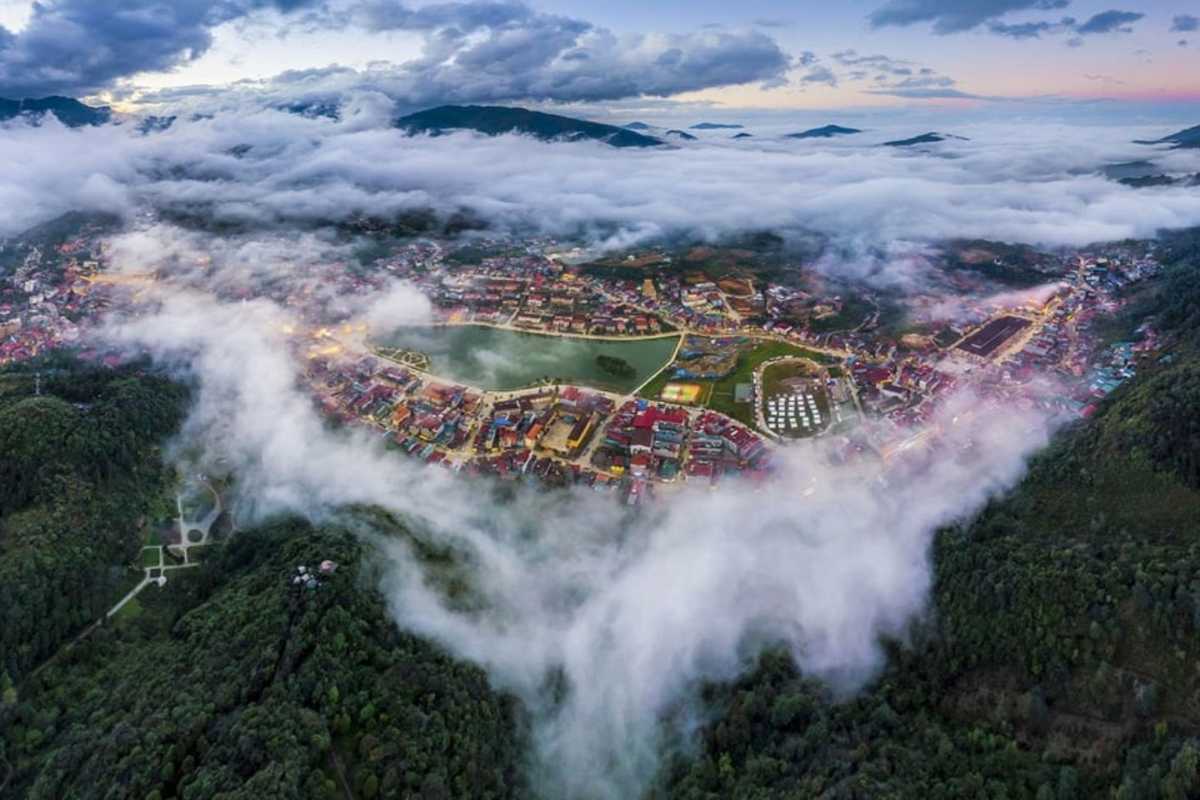
Getting from Sapa Town Center to Ham Rong Mountain
The route from Sapa town to Ham Rong is direct, simple, and takes less than ten minutes on foot. If you’re asking how to get to Ham Rong from Sapa, start in the lively center—most hotels, guesthouses, and cafés are just a stone’s throw away. Begin at the iconic Sapa Stone Church, a beloved landmark and natural meeting point for both locals and travelers.
From the church, face Fansipan Road. Walk up this main street for about 300 meters, following the gentle incline and watching for clear signs pointing to the Ham Rong Mountain entrance. The walk is pleasant and lined with local shops, so you’re never far from refreshments or helpful advice. You’ll soon spot the bold Ham Rong gate, marking your arrival at the mountain’s welcoming threshold.
These directions make the journey stress-free, whether you’re carrying a camera, backpack, or simply a sense of curiosity. Ready for your ascent? Let us know at Asia Travel Links if you’d like a custom walking map or insider tips for a smooth walk to Ham Rong Sapa.
Walking Routes, Landmarks, and Local Tips
Navigating the walk to Ham Rong Sapa is straightforward, especially when you know the landmarks along the way and follow a few expert tips:
- Sapa Stone Church: Your best starting point—meet here, then head up Fansipan Road.
- Fansipan Road: The main walking path, well-maintained and gently sloped, with plenty of foot traffic.
- Local Cafés and Shops: Great for a quick coffee or water refill before your climb.
- Ham Rong Mountain Entrance Gate: Look for the prominent arch and ticket counter at the end of your walk.
- Town Center Proximity: Most central accommodations are within a five-minute stroll, so there’s no need for transport.
For a comfortable walk, wear sturdy shoes—sidewalks can be uneven in places. Carry a water bottle, especially if you’re heading out during the midday sun, and pace yourself on the final incline. The path is well-marked and safe for solo travelers, families, and groups alike.
Following this Sapa walking guide ensures a hassle-free, enjoyable approach to Ham Rong Mountain, with time to pause for photos or a snack along the way. If you’d like more detailed advice, the team at Asia Travel Links is happy to help plan your route or provide extra local tips for the perfect walking experience.
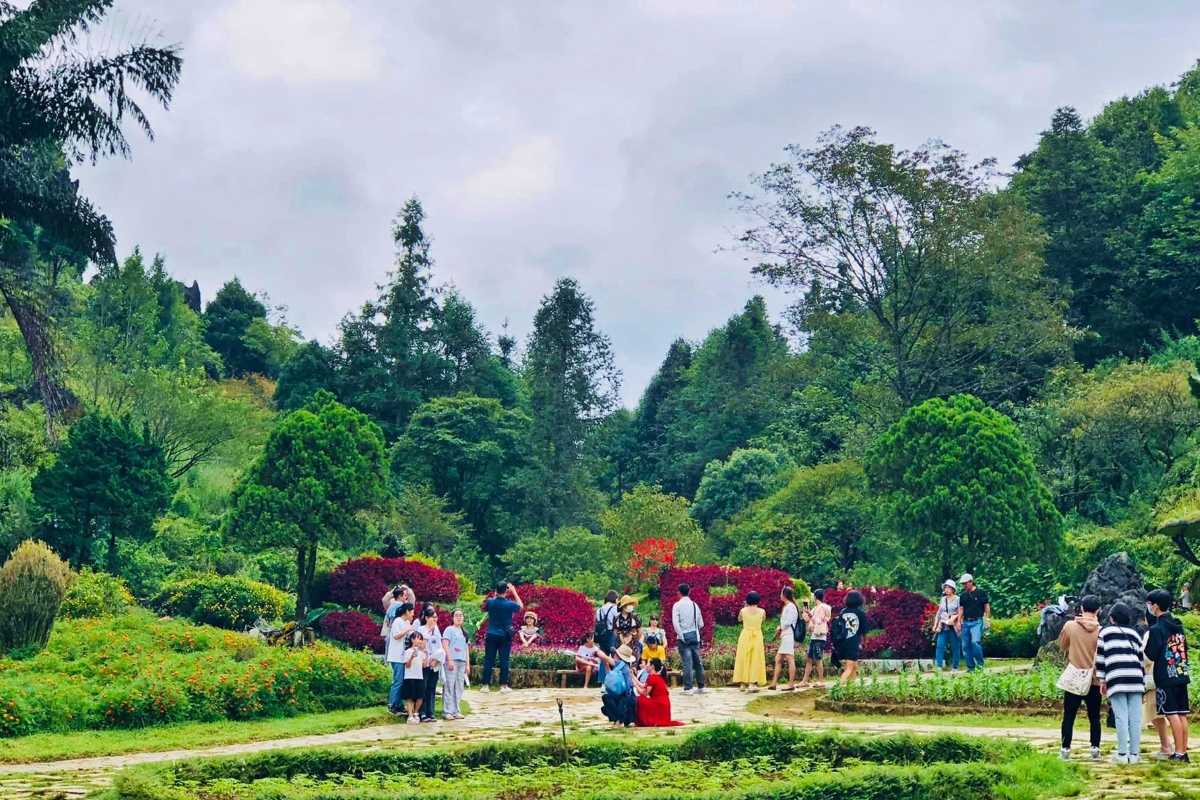
Accessibility Considerations and Tips for All Types of Travelers
Ham Rong Mountain welcomes visitors of all ages, but its terrain can present challenges for some. The main paths are paved and well-kept, yet you’ll encounter stairs, inclines, and occasional uneven sections. Understanding Ham Rong accessibility is essential to ensure everyone has a safe and comfortable visit, whether you’re traveling with kids, older adults, or anyone with limited mobility Sapa adventures in mind.
Families with young children should note that strollers aren’t recommended for the trails, as steps and narrow passages make them hard to maneuver. Instead, a baby carrier is ideal for little ones, and children who enjoy a bit of climbing will love the adventure. Bring snacks and water, and plan for frequent breaks at benches and shaded spots along the way.
For seniors or those looking for Ham Rong for seniors guidance, taking it slow and using handrails on steeper steps makes the ascent more manageable. The main paths are safe, but some offshoots can be slippery, especially after rain. Lightweight walking poles can add extra confidence for anyone with balance concerns.
If you’re visiting with limited mobility Sapa requires a little extra planning. While the lower sections of Ham Rong Mountain are the most accessible, the upper viewpoints and gardens involve more steps and steeper grades. It’s best to enjoy the lower gardens, amphitheater, and nearby viewpoints, then rest as needed.
Accessibility quick tips:
- Terrain: Expect stairs, paved paths, and moderate inclines—plan footwear accordingly.
- For Kids: Use carriers for babies/toddlers; encourage older kids to walk and explore.
- For Seniors: Take it slow, use handrails, and choose flatter routes when possible.
- For Limited Mobility: Focus on lower-level attractions; bring a companion for assistance.
- General Comfort: Carry water, sun protection, and don’t hesitate to pause for breaks.
By understanding your needs and preparing with these insights, everyone in your group can find something special at Ham Rong Mountain. Have questions or want personalized accessibility tips? Asia Travel Links is always available to help you tailor your day for maximum comfort and enjoyment.
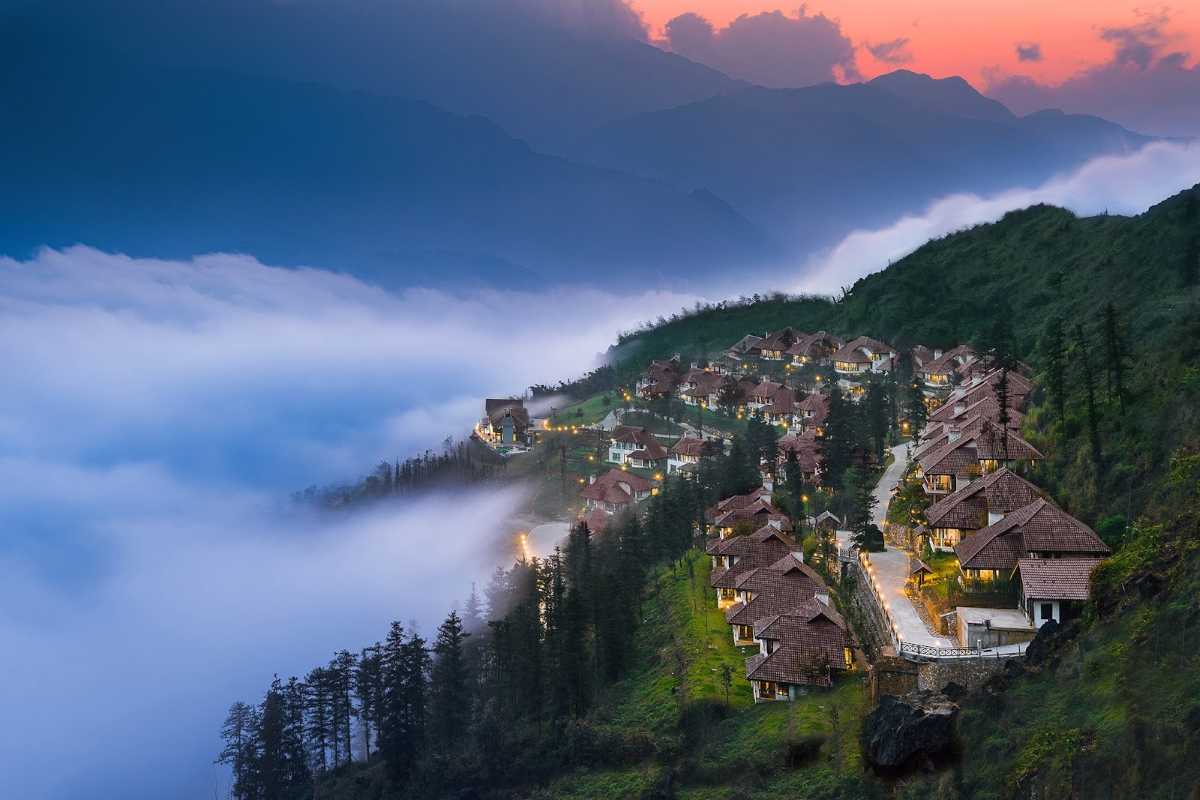
Ham Rong Mountain Entrance, Tickets & Visitor Information
Getting the latest details on Ham Rong Mountain entrance fee, tickets, and visitor policies will make your trip planning fast and hassle-free. With clear prices, opening hours, and straightforward access, you can organize your day around what matters most—soaking in the mountain’s beauty and culture. Here’s everything you need to know before you arrive in Sapa.
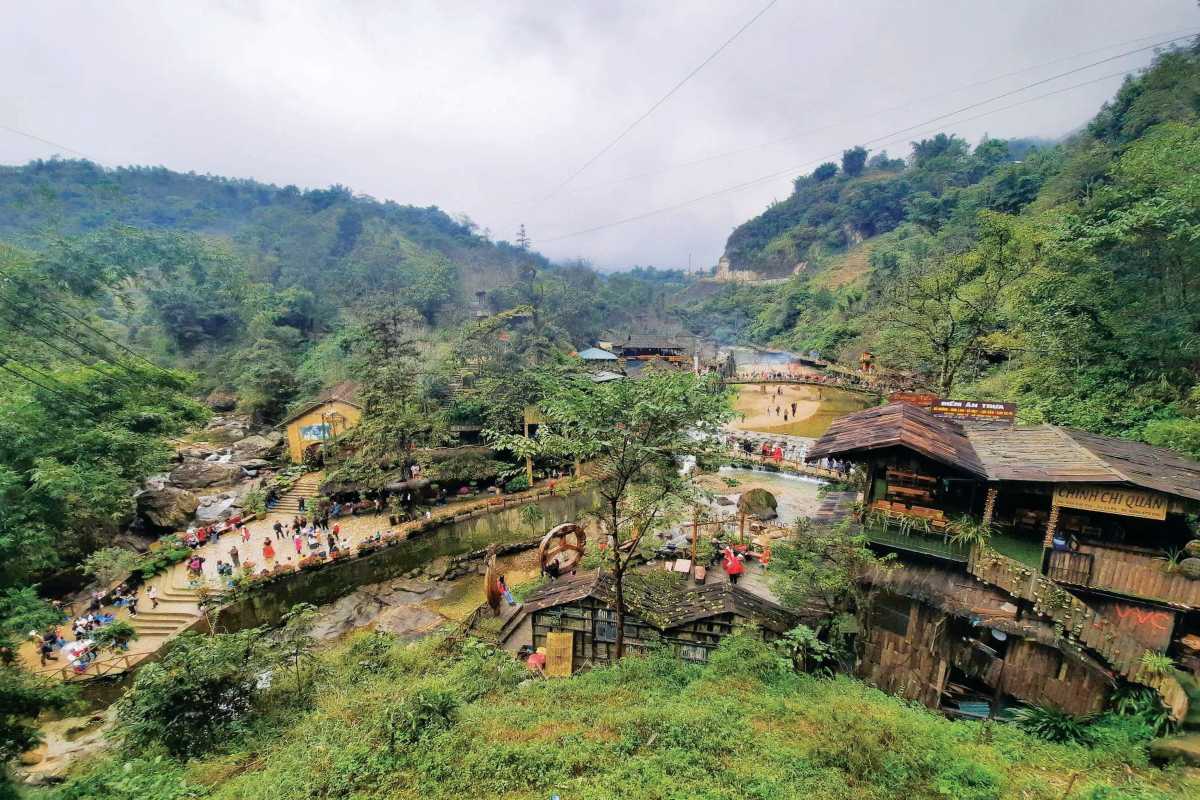
Current Entry Fees, Opening Hours, and Ticket Policies
Knowing the official Ham Rong Mountain entrance fee and schedule helps you plan your budget and time. Entry fees and opening hours are updated regularly, but as of 2024, you can expect:
- Adults (Vietnamese): 70,000 VND per person
- Adults (Foreigners): 70,000 VND per person
- Children (Under 1.2m tall): 20,000 VND per person
- Children (Above 1.2m tall): Full adult price applies
Opening hours are generous, allowing for early ascents or late-afternoon strolls:
- Ham Rong opening hours: 7:00 AM – 6:00 PM daily
- Ticket sales close: 5:00 PM (no entry after this time)
- Ham Rong ticket price: Includes full access to all gardens, flower displays, and panoramic viewpoints
Special notes and ticket policies:
- Group discounts may be available for large parties—check at the ticket counter
- Ticket is valid for one entry only; no re-entry on the same ticket
- Some special events or cultural shows inside may require a small extra fee
All prices and times are subject to change, so it’s wise to check just before your visit or contact Asia Travel Links for the latest information. By planning ahead, you’ll enjoy every minute on the mountain without worry.
Where to Buy Tickets and What’s Included
Purchasing tickets for Ham Rong Mountain is a simple process. Here’s what to expect and what your ticket covers:
- Ham Rong ticket counter: Buy Ham Rong tickets directly at the entrance gate, where friendly staff will answer questions and provide a site map.
- Online purchase: Occasionally available through official Sapa tourism sites or trusted travel agencies—check for current links and accepted payment methods.
- Ticket office location: The main office sits just beneath the iconic entrance arch, impossible to miss as you approach from Sapa town.
- What does Ham Rong ticket include: Your ticket grants access to the entire mountain park—flower gardens, orchid displays, panoramic viewpoints, cultural show amphitheater, and all walking trails.
For a smooth entry:
- Arrive early in the day, especially during flower season or weekends, to avoid long ticket lines.
- Keep your ticket handy—staff may check it at various park checkpoints.
- Ask about extra activities or shows at the counter, so you don’t miss out on special events.
Buying your ticket is quick and easy, ensuring you maximize your time at Ham Rong Mountain. Need help with advance booking or advice on peak hours? Email us at Asia Travel Links, and we’ll be happy to assist with planning your visit to this stunning Sapa landmark.
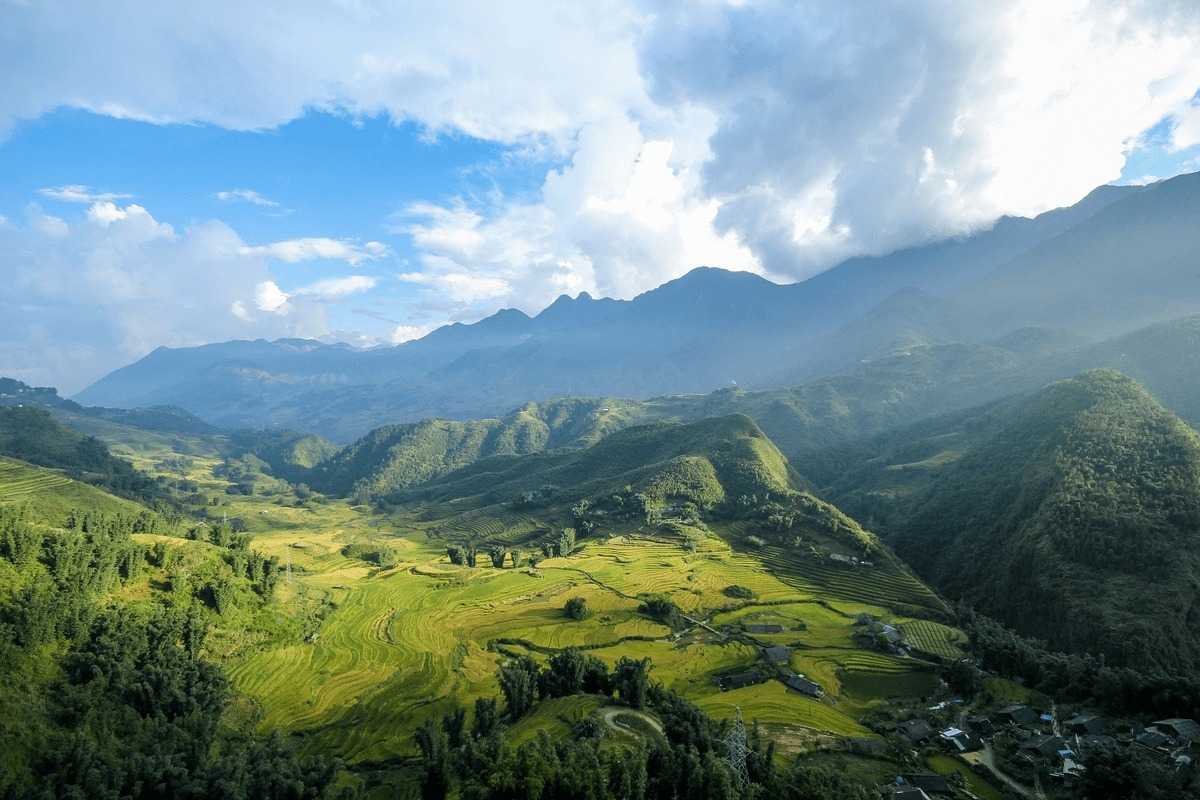
What to Bring and What to Expect at the Entrance
A little preparation goes a long way when it comes to Ham Rong entrance tips and knowing what to bring to Ham Rong. Arriving at the gate of Ham Rong Mountain is a straightforward process, but having your essentials ready makes it even smoother. Here’s a quick checklist and what you can expect as you begin your Sapa adventure:
- Water Bottle: Hydrate before and during your climb—there are limited water stations inside.
- Camera or Smartphone: Capture the flowers, gardens, and sweeping views. Keep your camera handy for spontaneous moments.
- Personal ID: Carry some form of identification (passport, ID card), as you may be asked to present it at the security check or ticket counter.
- Entry Ticket: Purchase in advance if possible, or buy on arrival—have cash or a payment card ready.
- Light Snack: Bring a small energy bar or fruit, especially if you plan a long stay on the mountain.
- Weather Gear: Pack a raincoat or umbrella during wet months, and sun protection in the dry season.
- Comfortable Backpack: Keep your hands free and distribute weight for the walk.
When you arrive, expect a short queue at the entrance—weekends and flower season can be busier. You’ll pass a basic security check where staff will check tickets and bags for safety. Facilities at the entrance include restrooms and a few small kiosks selling snacks or drinks. The process is friendly and efficient, reflecting Sapa’s welcoming spirit.
By preparing ahead, you’ll breeze through the entrance and head straight for the gardens and trails of Ham Rong Mountain. Need more practical packing advice or arrival support? Reach out to Asia Travel Links before your visit, and we’ll make sure you start your day ready and relaxed.
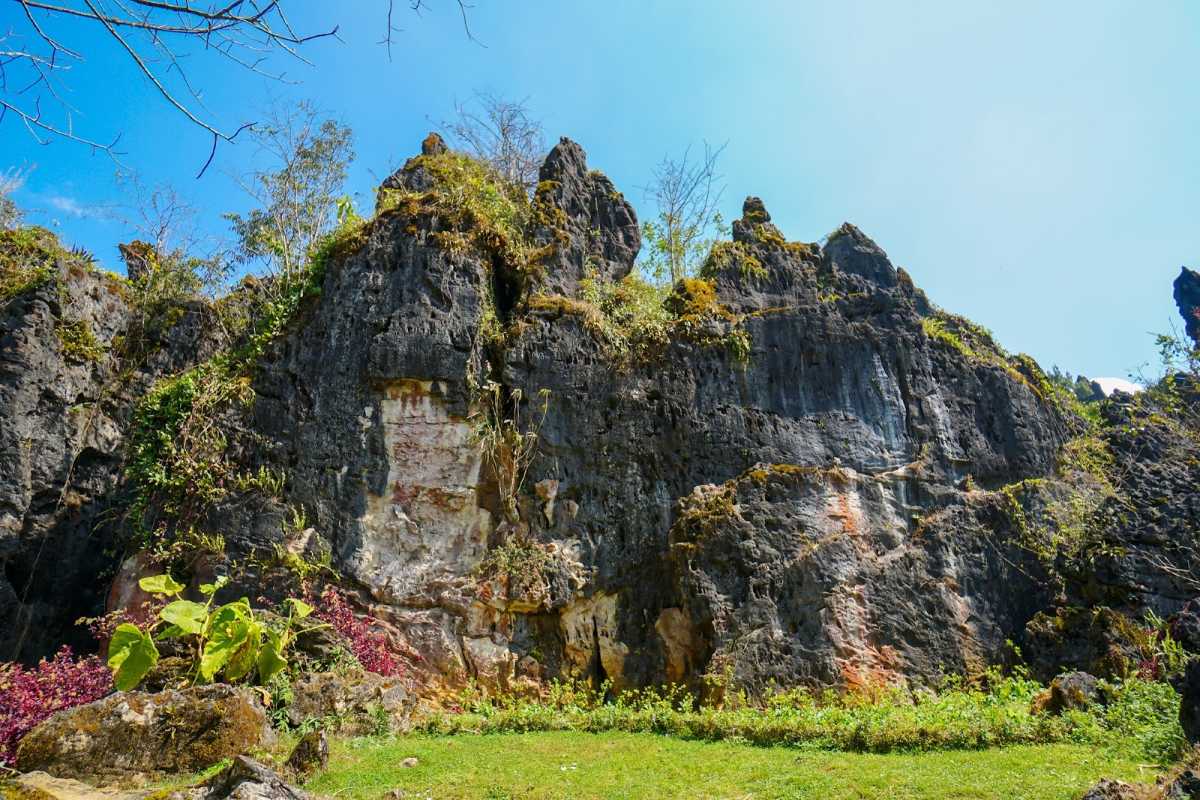
Top Things to Do at Ham Rong Mountain Sapa
A day at Ham Rong Mountain Sapa is a journey through panoramic viewpoints, blooming flower gardens, vibrant cultural performances, and quiet corners that invite discovery. This isn’t just a mountain walk—it’s a collection of experiences designed for every kind of traveler. Whether you crave adventure, beauty, or family memories, you’ll find something here to make your visit unique.
Let’s explore the best activities, highlights, and hidden gems that will shape your perfect day on Ham Rong Mountain Sapa. Need help planning your route or want tips tailored to your travel style? Asia Travel Links can help create a custom experience just for you.
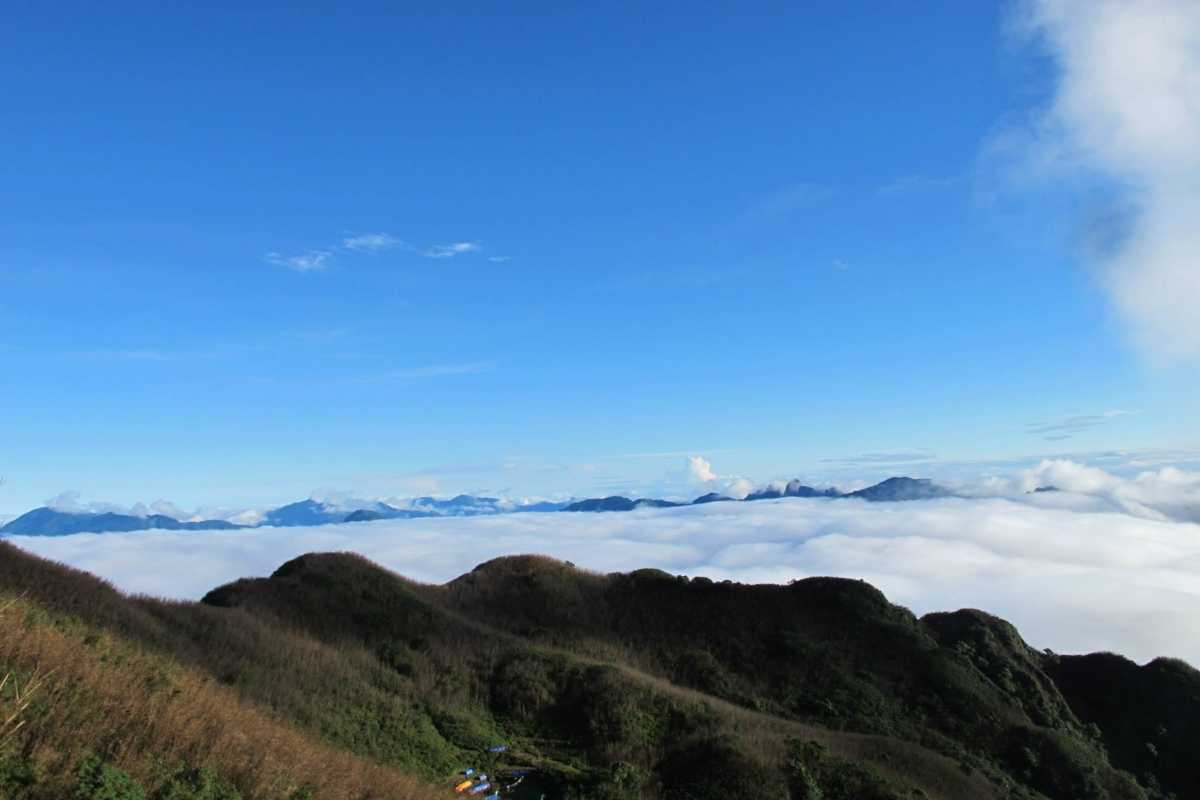
Scenic Hiking Trails and Viewpoints
There’s something magical about following the Ham Rong hiking trails as they wind upward, offering new perspectives at every turn. Most paths are paved or stone, and you’ll find routes suitable for all fitness levels. Some trails are gentle, winding through flower gardens and shaded groves. Others challenge you with stone steps and steeper inclines, rewarding every effort with the best viewpoints Ham Rong has to offer.
Here’s what you can expect from a Ham Rong mountain walk:
- The Garden Path: A leisurely stroll among orchids, hydrangeas, and peach blossoms. Great for families and those wanting to linger over every petal and scent.
- The Stone Steps Route: More demanding, with stretches of stairs and switchbacks, but the reward is breathtaking—views over the rooftops of Sapa and the green expanse beyond.
- The Summit Trail: Pushes to the highest vantage points and panoramic lookouts, ideal for hikers seeking a heart-pumping ascent and the satisfaction of standing above the clouds.
Every trail is marked, and you’ll find plenty of benches and scenic resting spots along the way. Want to make the most of your walk? Wear supportive shoes and bring water—pausing at each viewpoint is part of the joy.
Cloud Yard (Sân Mây), Stone Forest, and the Best Panoramic Spots
Some places on Ham Rong Mountain simply take your breath away. These are the “can’t-miss” highlights:
- Ham Rong Cloud Yard (Sân Mây Sapa): The most iconic spot on the mountain. Here, clouds drift at your feet while the entire town of Sapa unfolds below. Early morning is magical—catch the sun rising over the mist, painting the sky in pastels.
- Ham Rong Stone Forest: A maze of towering stone pillars and curious rock formations, perfect for photos and for kids (or adults) who love a little exploring.
- Other Panoramic Viewpoints: The amphitheater and summit garden offer 360-degree views, from the rooftops of Sapa to the blue silhouette of distant mountains.
You’ll find benches, photo points, and plenty of space to pause, breathe in the cool air, and let the beauty of the landscape settle in. For the best panoramic views Sapa has to offer, these spots are unbeatable.
Ready to map out your highlights or want advice on the best trail for your group? Contact Asia Travel Links, and we’ll help you plan the perfect day among the clouds and wildflowers of Ham Rong Mountain Sapa.
Robert's Ascent: Conquering the Cloud Yard for Sunrise Views
They say the early bird catches the worm, but in Sapa, the early riser often catches the most spectacular views. My mission was clear: conquering the Cloud Yard for sunrise views on Ham Rong Mountain. Most visitors head up mid-morning, but I was determined to experience the ethereal magic of dawn breaking over the "Dragon Jaw" mountain, even if it meant a chilly, Ham Rong early morning trek. This wasn't just a hike; it was a pilgrimage to witness a fleeting moment of pure, unadulterated beauty that few others get to see.
My alarm blared at 4:30 AM, an ungodly hour for a holiday, but the thought of the sunrise pulled me from my warm blankets. Stepping outside my guesthouse, the cool morning air of Sapa bit at my exposed skin, making me pull my jacket tighter. The town was still slumbering, wrapped in a thick, silent blanket of mist, the only sounds the distant crow of a rooster and my own footsteps echoing on the cobbled streets. The walk to the Ham Rong entrance was eerie yet exciting, the familiar landmarks appearing as ghostly silhouettes through the fog.
The ascent began in near darkness, guided only by faint path lights and the glow of my phone flashlight. The stone steps were slick with dew, demanding careful footing. Each breath I exhaled hung visible in the frigid air. As I climbed higher, the mist seemed to swirl around me, sometimes parting to reveal a glimpse of a towering tree or a fantastical rock formation, only to close in again, making me feel utterly alone in a mystical realm. My legs burned, and my lungs worked hard in the thin mountain air, but the anticipation kept me going. I could hear nothing but my own heartbeat and the subtle rustle of leaves as I pressed onward.
Reaching the Cloud Yard (Sân Mây) was a triumph in itself, but the real reward was yet to come. I found a prime spot, shivering slightly, and waited. The first hint of change wasn't visual but atmospheric – the air grew lighter, less dense. Then, a faint, almost imperceptible lightening began at the horizon, a soft grey giving way to delicate hues of rose and lavender. The mist clearing was a slow, majestic dance; like a curtain slowly drawing back on a grand stage, revealing the breathtaking drama unfolding before me.
And then it happened. The breathtaking moment the sun appears was like a slow-motion explosion of color. A sliver of fiery orange breached the distant mountain peaks, sending long, golden fingers across the vast valley. The clouds, which moments before had been an impenetrable white wall, transformed into a rolling sea of cotton candy, tinged with gold and pink. Sapa town, nestled far below, began to emerge, its lights twinkling like scattered jewels. The terraced rice fields, previously hidden, revealed themselves in sweeping emerald and jade contours. The emotional impact of the panoramic view was overwhelming – a mix of awe, serenity, and profound gratitude. I felt small yet connected to something immense and ancient. The cold was forgotten, the early rise justified a thousand times over. It was pure magic, a painting come to life, and I stood there, utterly mesmerized, until the sun was high enough to cast its full, golden embrace over the entire landscape.
For those who crave this unforgettable experience, here are my practical tips for early risers:
- Check Sunrise Times: Know the exact sunrise time for your visit. It changes seasonally!
- Layer, Layer, Layer: Even on a warm day, the mountain is cold before dawn. Wear multiple layers you can peel off as the sun rises. A windproof and waterproof outer layer is essential, as the mist can be damp.
- Wear Sturdy, Non-Slip Shoes: The steps can be wet and slippery in the dark and mist. Good grip is crucial.
- Bring a Headlamp or Flashlight: Essential for navigating the paths before dawn. Some areas are unlit.
- Pack a Thermos: A hot coffee or tea will feel incredibly comforting as you wait for the sun.
- Arrive Early: Give yourself at least 30-45 minutes before actual sunrise to find a good spot and watch the sky change.
- Check the Weather... But Be Flexible: Sapa's weather is notoriously fickle. Even if it's misty, the mist clearing can be just as beautiful as a clear sky. Embrace the atmospheric drama!
Witnessing the sunrise from Ham Rong's Cloud Yard was a truly transformative experience, a memory I will forever cherish. It was a perfect blend of natural grandeur and personal achievement.
Recommendation: If you have the opportunity and the spirit for an early start, do not miss the chance to experience the sunrise from Ham Rong Mountain's Cloud Yard (Sân Mây). It's a challenging but deeply rewarding experience that offers unparalleled panoramic views and a unique connection to Sapa's mystical landscape. Trust me, it's worth every early alarm!
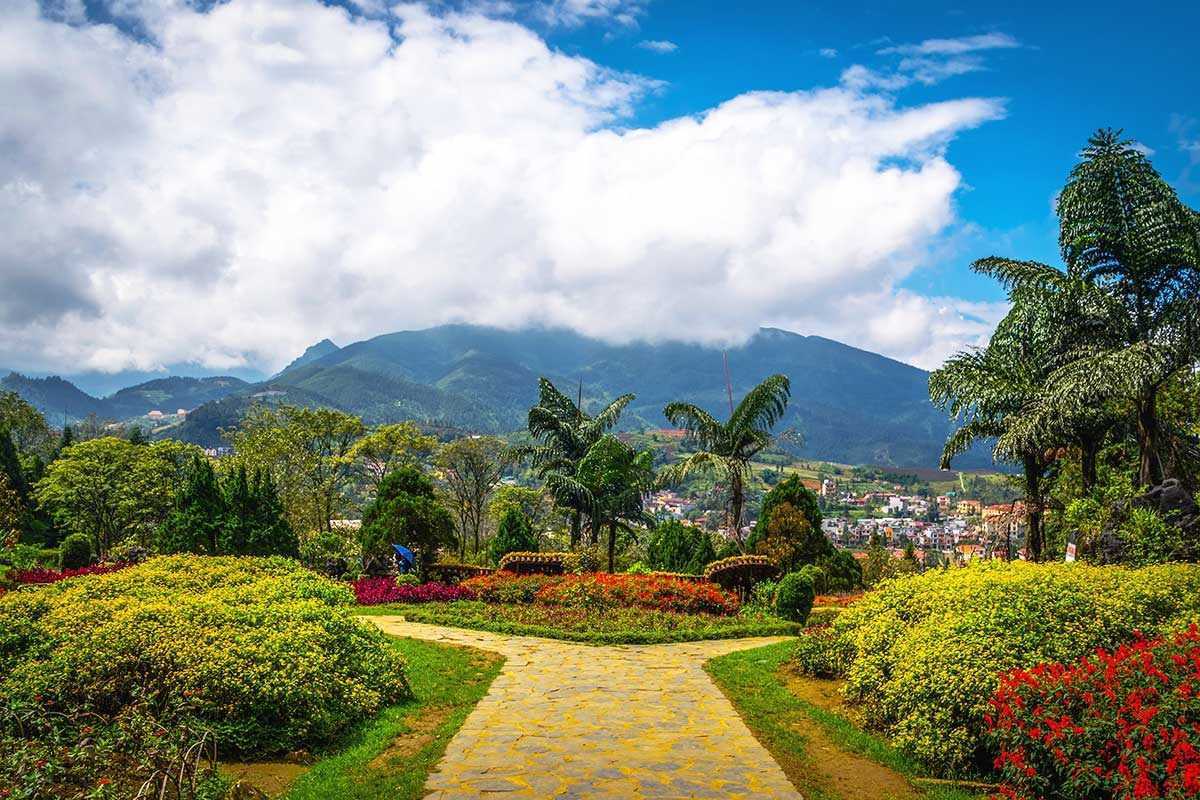
Strolling Through Orchid and Flower Gardens
The Ham Rong flower gardens are a sensory delight, known for their dazzling variety of blooms and the tranquil atmosphere that draws visitors from across Sapa and beyond. Walking into the Sapa orchid garden, you’re immediately enveloped by a kaleidoscope of color—orchids in soft pinks and fiery reds, hydrangeas in blue and violet, and lush beds of seasonal daisies, lilies, and peonies. The air is fragrant, each step offering a new scent: sweet from the peach blossoms, spicy from rare lilies, and fresh from dew-kissed leaves.
These gardens are more than a visual treat; they’re home to dozens of Ham Rong rare flowers, including the legendary “five-petaled orchid” found only in this region. Spring and early summer bring out the boldest colors, while late autumn sees the gardens painted in golden hues. Take your time wandering shaded paths, listening to birdsong and the gentle buzz of bees among the petals.
Some areas of the garden feature displays of rare and medicinal plants, used by local ethnic communities for centuries. Whether you’re a passionate gardener, a curious traveler, or simply searching for a moment of peace, the flower gardens of Sapa are sure to linger in your memory.
Ready to capture the season’s blooms or need advice on finding the most stunning Ham Rong rare flowers? Reach out to Asia Travel Links for insider tips and a customized garden trail.
Rare Species, Seasonal Blooms, and Can’t-Miss Photo Ops
Catching the garden’s rarest species and most vivid colors is all about timing and location. Here’s how to maximize your Sapa flower photography and leave with unforgettable images:
- Orchid Blooms (March–May): The highlight of the season—look for the shaded orchid house and rare five-petaled varieties in early spring.
- Peach Blossoms (Late February–March): Find these delicate pink blooms along the main paths and garden arches; mornings offer the softest light for photos.
- Hydrangea Beds (June–August): Wide patches of blue and violet hydrangeas are at their peak in midsummer, especially near the garden’s upper terraces.
- Medicinal Herb Corners (Year-Round): For those intrigued by unique flora, the herbal plant section is best in early morning or late afternoon light.
- Best Ham Rong photo spots: The bridge over the central pond, beneath the arched garden gates, and the bench by the upper waterfall all offer iconic views and backgrounds.
Every bloom has its moment, and each part of the garden rewards patience and a keen photographer’s eye. Early morning and late afternoon—golden hours in Sapa—deliver soft, glowing light that makes flower colors truly pop.
Bring your camera, experiment with angles, and don’t hesitate to ask local gardeners for tips on hidden blossoms or unique perspectives. For updated bloom schedules or personalized photo walks, contact Asia Travel Links—we’re happy to help you make the most of your visit to the flower gardens of Ham Rong Mountain.
Anh's Afternoon: A Serene Stroll Through the Orchid Gardens
While many visitors to Ham Rong Mountain rush to the panoramic viewpoints, my most cherished memory is the quiet, almost meditative joy of Anh's afternoon: a serene stroll through the Orchid Gardens. This wasn't about conquering a summit or chasing a perfect photo; it was about slowing down, engaging all my senses, and discovering a truly peaceful place in Ham Rong amidst the vibrant chaos of Sapa.
After a morning of exhilarating climbs and soaking in vast vistas, I found myself drawn into the lower slopes of the mountain, where the air softened, and the light seemed to filter differently through the canopies. The moment I stepped onto the paths weaving through the Orchid Gardens, a profound sense of tranquility washed over me. The very first thing that struck me was the delicate scents – a subtle, sweet perfume that wasn't overpowering but gently lingered, a mix of damp earth and the myriad blooms. It was a stark contrast to the busy market sounds of Sapa town, and I instantly felt my shoulders relax.
The vibrant colors were a feast for the eyes. Orchids, in every imaginable shade, cascaded from trellises, peeked from rocky crevices, and stood proudly in neatly arranged beds. There were sprays of pristine white, fiery reds, deep purples, and speckled yellows, each bloom a tiny work of art. I lost track of time wandering from one section to another, marveling at the intricate patterns on their petals. I remember stumbling upon a particularly striking cluster of lavender-colored orchids, their petals so velvety they almost invited a touch, shimmering with dew. It felt like a small, personal discovery, tucked away in a quiet corner.
Beyond the orchids, other flowers created a tapestry of hues – hydrangeas in blues and pinks, cheerful impatiens, and countless varieties I couldn't name but admired nonetheless. The air was alive with the soft buzzing of bees and the occasional chirping of hidden birds, adding to the gentle symphony of the garden. There were benches strategically placed, inviting quiet contemplation, and I took advantage of one, simply sitting and letting the sheer beauty of my surroundings envelop me. It was a rare moment of stillness, a profound sense of tranquility that felt like a balm to the soul.
The experience brought a sense of peace that lingered long after I left. It wasn't just the visual beauty; it was the feeling of being truly present, connected to nature's artistry. I realized that sometimes, the most memorable travel moments aren't about grand achievements, but about these intimate, sensory encounters. The Orchid Gardens of Ham Rong offered a quiet respite, a gentle reminder to appreciate the small wonders.
For anyone seeking a similar sense of calm and beauty within Ham Rong, here are my specific insights and takeaways:
- Pace Yourself: Don't rush through the gardens. Allocate at least an hour, if not more, to truly wander and absorb the details.
- Engage Your Senses: Beyond looking, consciously breathe in the scents, listen to the subtle sounds of nature, and notice the textures of the plants.
- Seek Out Quiet Nooks: While some paths are more frequented, look for smaller trails or benches off the main route. These often offer the most personal and serene spots.
- Visit in the Morning or Late Afternoon: These times often have softer light, fewer crowds, and a more pleasant temperature, enhancing the tranquil atmosphere.
- Bring a Macro Lens (if you're a photographer): The intricate details of the orchids are stunning up close.
- Look for the Labels: Many plants are labeled, offering a chance to learn about the different species.
- Connect with the Caretakers: If you see any garden staff, a polite smile or simple "hello" can sometimes lead to a deeper insight into their work.
My afternoon in the Ham Rong Orchid Gardens wasn't just a walk; it was a deeply personal and restorative experience that allowed me to truly connect with the gentle soul of Sapa.
Recommendation: Don't let your visit to Ham Rong Mountain be solely about the panoramic views! Dedicate ample time to a serene stroll through the Orchid Gardens. It is a profoundly peaceful place in Ham Rong that offers a sensory escape and a beautiful, tranquil counterpoint to the more adventurous aspects of the mountain. It’s an Orchid Garden Sapa experience you won't want to miss.
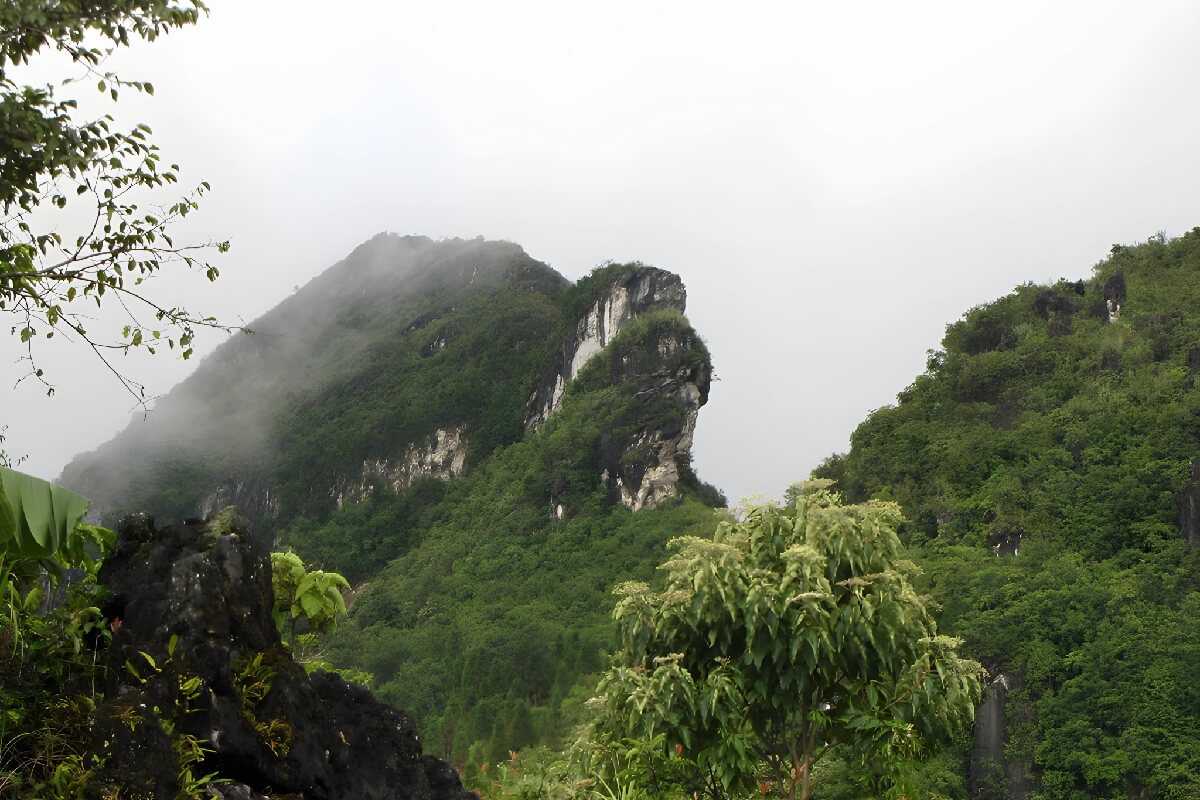
Discovering Hidden Corners and Fairy Gardens
If you crave adventure and delight in the unexpected, the Ham Rong Fairy Garden is your gateway to the mountain’s best hidden gems Ham Rong. Step away from the main thoroughfares and follow the winding side trails—you’ll quickly find yourself immersed in a world where nature and legend intertwine. The air changes here, quieter and more mysterious, as if Sapa itself is holding its breath.
Among the mossy stones and twisting roots, you’ll discover unique rock formations Sapa is famous for: towering pillars, natural arches, and shapes that seem sculpted by ancient hands. Locals whisper tales of forest fairies and mountain spirits, and in the early morning mist, you’ll understand why. The Fairy Garden is more than a name—it’s a space for daydreams, secrets, and stories passed down through generations.
Don’t rush this part of your journey. Pause beneath an overhanging boulder, listen to the birdsong, and watch the play of sunlight through tangled leaves. Every visit reveals a new secret, a fresh path, or a hidden nook perfect for quiet reflection. For families, the area is an enchanting playground; for solo travelers, it’s a place to reconnect with wonder.
Curious where to find these enchanting places or want a guide to Sapa’s best-kept secrets? Asia Travel Links can help you plan a custom route to every magical corner of Ham Rong Mountain.
Quiet Paths, Unique Rock Formations, and Local Folklore
Ready to uncover the mountain’s most memorable corners? Follow these practical directions and enjoy a taste of Ham Rong’s secret world, rich in myth and mystery:
- Ham Rong secret paths: From the main summit trail, look for side tracks marked “Vườn Cổ Tích” (Fairy Garden)—these winding paths are less traveled and perfect for explorers.
- Unique rock formations Sapa: Keep an eye out for natural stone “arches,” “thrones,” and even “faces” etched by wind and rain over centuries.
- Sapa hidden spots: Quiet alcoves shaded by ancient trees, ideal for rest, contemplation, or an unforgettable photo.
- Local folklore Ham Rong: Locals say fairies once danced on these stones at dawn—ask a guide or local elder for the full tale.
- Cultural tip: Respect these places as sacred ground; leave only footprints, take only photos.
Each secret path or legendary stone adds a new layer to your understanding of Sapa’s natural and cultural richness. These aren’t just sights—they’re living stories waiting to be discovered by curious travelers. Looking for more guidance on Ham Rong’s mysteries? Reach out to Asia Travel Links, and we’ll help you unlock the mountain’s hidden magic.
Elena's Discovery: Unearthing a Hidden Path & Unexpected Vista
Sometimes, the best travel moments aren't found on the main tourist trail but tucked away, waiting for a curious eye. My visit to Ham Rong Mountain certainly proved this, as I stumbled upon an incredible personal discovery on Ham Rong by taking a spontaneous detour. My adventure wasn't about sticking to the map; it was about yielding to curiosity, and it led me to a secluded, beautiful spot that felt like my very own secret. This was my moment of truly going Ham Rong off the beaten path.
The main paths on Ham Rong are well-marked and lead to the famous viewpoints, but as I was nearing the "Fairy Garden" section, my eye caught a faint, narrower track winding off to the right, partially obscured by some lush ferns. It looked less maintained than the others, almost like a path only the local gardeners would use. A tiny sign, mostly faded, hinted at a "Stone Garden" beyond. My hiking buddy was a few steps ahead, but something in me whispered, "Go that way." It was a split-second decision, a little thrill of rebellion against the clearly defined route.
The path immediately narrowed, the cheerful chatter from the main trail fading into the background. The air grew cooler, dappled with sunlight filtering through denser foliage. The ground underfoot was softer, a mix of damp earth and moss-covered stones. I felt a surge of excitement, a delicious sense of venturing into the unknown. The "Stone Garden" was less of a manicured space and more of a wild, whimsical collection of giant, moss-covered boulders, some resembling fantastical creatures, others sculpted by nature into intriguing archways. It felt ancient, untouched. The silence was profound, broken only by the chirping of unseen birds and the rustle of leaves in the gentle breeze.
I kept walking, guided by a faint sense of direction, until the path sloped upwards, opening onto a small, flat rock outcrop. And there it was: an unexpected vista in Sapa that took my breath away. It wasn't the sweeping, panoramic view of the Cloud Yard, but something far more intimate and unique. Through a natural frame of ancient trees, I saw a hidden valley, previously invisible from the main trails. The morning mist was just beginning to burn off, revealing pockets of terraced rice fields gleaming emerald green, and a tiny, winding stream glittering silver in the sunlight. Beyond, the majestic peaks of the Hoang Lien Son mountain range stood guard, their summits still shrouded in wisps of cloud. It was a quieter, more personal grandeur.
The satisfaction of this personal discovery was immense. I remember pulling out my phone, not to get the "perfect" picture for social media, but to simply capture the feeling of that moment. The photo I snapped, framed by the gnarled branches of a solitary pine, shows a serene, misty landscape that truly feels like it belongs only to me. It's not a postcard shot, but it's my postcard shot, infused with the thrill of having found it myself. The unexpected reward of curiosity was a profound sense of peace and a reminder that true travel often lies beyond the guidebook.
For fellow explorers who want to carve out their own unique moments on Ham Rong:
- Trust Your Instincts: If a side path looks intriguing and relatively safe, give it a try! Sometimes the best discoveries are found where fewer people go.
- Keep an Eye Out for Subtle Signs: Look for faint trails, small, weathered signs, or changes in the flora that suggest a deviation.
- Wear Appropriate Footwear: These "hidden" paths might be uneven, muddy, or slippery. Good hiking shoes are a must.
- Have a Basic Sense of Direction: While getting truly lost on Ham Rong is hard, knowing the general direction of the main path or exit is always wise.
- Embrace the Quiet: These secluded spots offer a chance for genuine tranquility away from the crowds. Take a moment to just be present.
- Charge Your Phone/Camera: You never know when you'll encounter a unique photo opportunity that others might miss.
- Respect Nature: Stay on established (even if faint) paths, and leave no trace.
My impromptu journey into Ham Rong's quieter corners gifted me not just a beautiful view, but a profound sense of connection with the mountain itself. It was a reminder that sometimes, the best laid plans are no plans at all.
Recommendation: Don't be afraid to let your curiosity guide you on Ham Rong Mountain. Dare to venture off the beaten path if a trail calls to you – you might just unearth your own personal discovery on Ham Rong and be rewarded with an unexpected vista in Sapa that becomes the highlight of your trip. The most memorable experiences are often the ones you create yourself.
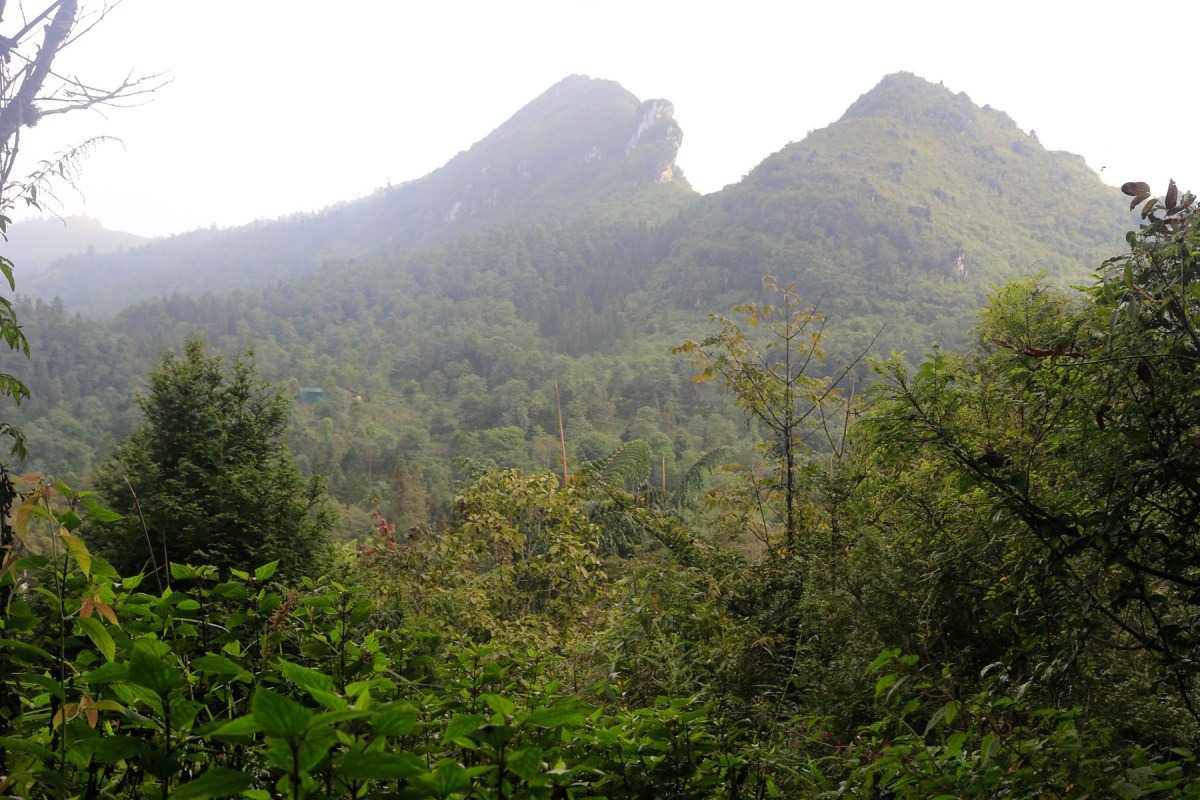
Enjoying Ethnic Cultural Performances and Festivals
One of the most rewarding ways to connect with Sapa’s spirit is through a Ham Rong cultural show—colorful, lively, and steeped in tradition. Each week, the open-air amphitheater on Ham Rong Mountain fills with the sound of Sapa ethnic performance, from ancient songs echoing through the hills to modern renditions of traditional dance Sapa is famous for. These aren’t staged acts for tourists alone; they’re vibrant expressions of local identity and pride, featuring the costumes, music, and stories of Black H’mong, Red Dao, and other highland communities.
Performers weave between audience and stage, inviting visitors to clap along or even join a circle dance. These moments are more than entertainment—they’re opportunities to understand the meaning behind every gesture, drumbeat, and embroidered shawl. You’ll leave with a new appreciation for the creativity, resilience, and unity of Sapa’s diverse people.
Curious about schedules or want to attend a festival? Shows typically run on weekends and during special events—always check the latest times at the ticket gate or with Asia Travel Links before planning your visit. Don’t miss your chance to experience culture that moves not just your feet, but your heart.
Live Music, Traditional Dances, and When to Catch a Show
Here’s how to make sure you catch the best of Ham Rong’s live performances:
- Ham Rong show times: Most weekends and Vietnamese public holidays, with shows starting at 10:00 AM and 3:00 PM. Some festivals add evening performances with lanterns and fire.
- Ethnic groups on stage: Black H’mong, Red Dao, Tay, and Giay performers rotate, showcasing their unique costumes, dances, and instruments.
- Music & dance variety: Listen for bamboo flutes, folk songs, and rhythmic group dances—each style tells a story from the mountains.
- Where to go: The open-air amphitheater is at the heart of Ham Rong’s cultural zone; arrive early for the best seats.
- Sapa cultural events: Check local schedules for special holiday festivals, like Tet or the Sapa Love Market, when performances are even more elaborate.
Engaging with these shows means stepping into Sapa’s living heritage. Respectful participation—clapping, cheering, or simply observing with an open mind—adds depth to your visit and supports the artists who keep these traditions alive.
Want a complete schedule or need help timing your trip for a special event? Asia Travel Links can provide updated info and personalized advice, so you won’t miss the cultural heartbeat of Ham Rong Mountain.
Mai's Encounter: Engaging with Local Performers & Understanding the Culture
Visiting Ham Rong Mountain offers more than just breathtaking views; it’s a gateway to the rich tapestry of Sapa’s ethnic minority cultures. For me, one of the most poignant moments wasn't found at a scenic overlook, but amidst the rhythmic sounds and vibrant colors of a traditional performance. This wasn't just entertainment; it was a genuine Sapa cultural experience, and it provided a truly heartwarming Ham Rong local interaction that deepened my understanding and appreciation.
After exploring the flower gardens and the Stone Forest, I followed the faint sound of music to a small, open-air stage nestled discreetly within the mountain park. The air, usually filled with the murmurs of fellow tourists, was now alive with a different kind of energy. As I approached, the sight that greeted me was mesmerizing. A group of local performers, primarily from the H'mong and Dao ethnic groups, moved with an effortless grace. The vibrancy of their costumes was absolutely captivating – intricate embroidery in rich indigo, crimson, and jade, adorned with silver jewelry that shimmered with every movement. Each stitch, I knew, represented generations of artistic tradition.
The traditional music of Sapa was equally enchanting. Flutes played haunting melodies, drums provided a steady, earthy rhythm, and stringed instruments created a complex, almost hypnotic soundscape. The performers, some young, some older, danced with a captivating blend of solemnity and joy, their movements telling stories of daily life, harvest, and ancient legends. I found myself completely mesmerized, my eyes tracing the graceful arcs of their hands and the intricate footwork. It wasn't a polished, theatrical show; it felt authentic, a window into their enduring heritage.
During a short intermission, a young H'mong woman, dressed in a stunning indigo outfit, approached the small audience. She spoke a little English, and I seized the opportunity for a brief interaction with a performer. Her name was May, and she had the most genuine, warm smile. I complimented her on her dancing and the beauty of her costume. She shyly explained that she and her family made all their clothes by hand, each pattern holding specific meaning. She pointed out a particular motif on her sleeve, explaining it represented prosperity. It was a simple exchange, but it humanized the performance instantly. Hearing her speak about her culture, her art, and her life, even for a few minutes, was incredibly impactful. It fostered a deeper respect, transforming them from "performers" to individuals sharing their heritage.
The insight I gained into the local culture from the show and from that brief conversation was profound. It wasn't just about the aesthetics; it was about the resilience, the pride, and the deep connection these communities have to their traditions, passed down through generations. It underscored the importance of respecting their customs and understanding the true value of their art, far beyond a simple tourist attraction. This engagement taught me the power of slowing down, observing, and being open to genuine connection.
For those eager to engage respectfully with Sapa's local culture and performers:
- Look for Authenticity: While many places offer performances, seek out those that feel genuinely connected to the community. Ham Rong's felt very much so.
- Applaud Enthusiastically: Show your appreciation for their artistry. A warm clap goes a long way.
- Ask for Permission (if taking close-up photos): While general photos of the performance are usually fine, if you want a close-up of a person or costume, a simple gesture asking "OK?" or "Photo?" with a smile is respectful.
- Support Ethically: If there's an opportunity to purchase handicrafts from the performers, consider doing so. Ensure it's directly supporting them, rather than a middleman.
- Engage Respectfully: If a performer approaches you, listen attentively. Ask open-ended questions if you're curious, but don't interrogate. A simple "Thank you" or compliment in Vietnamese (Cảm ơn - gahm un) is appreciated.
- Observe Etiquette: Generally, avoid touching performers without permission. Be mindful of personal space.
My encounter with May and the performance wasn't just a highlight of my Ham Rong visit; it was a deeply enriching moment that transcended typical tourism, fostering a genuine appreciation for Sapa's vibrant cultural soul.
Recommendation: When visiting Ham Rong Mountain, make sure to seek out the local cultural performances. It’s a fantastic opportunity for a meaningful Sapa cultural experience and offers genuine Ham Rong local interaction. Take the time to truly watch, listen, and if possible, engage respectfully with the performers. You'll leave with a far richer understanding and a more heartfelt connection to this incredible region.
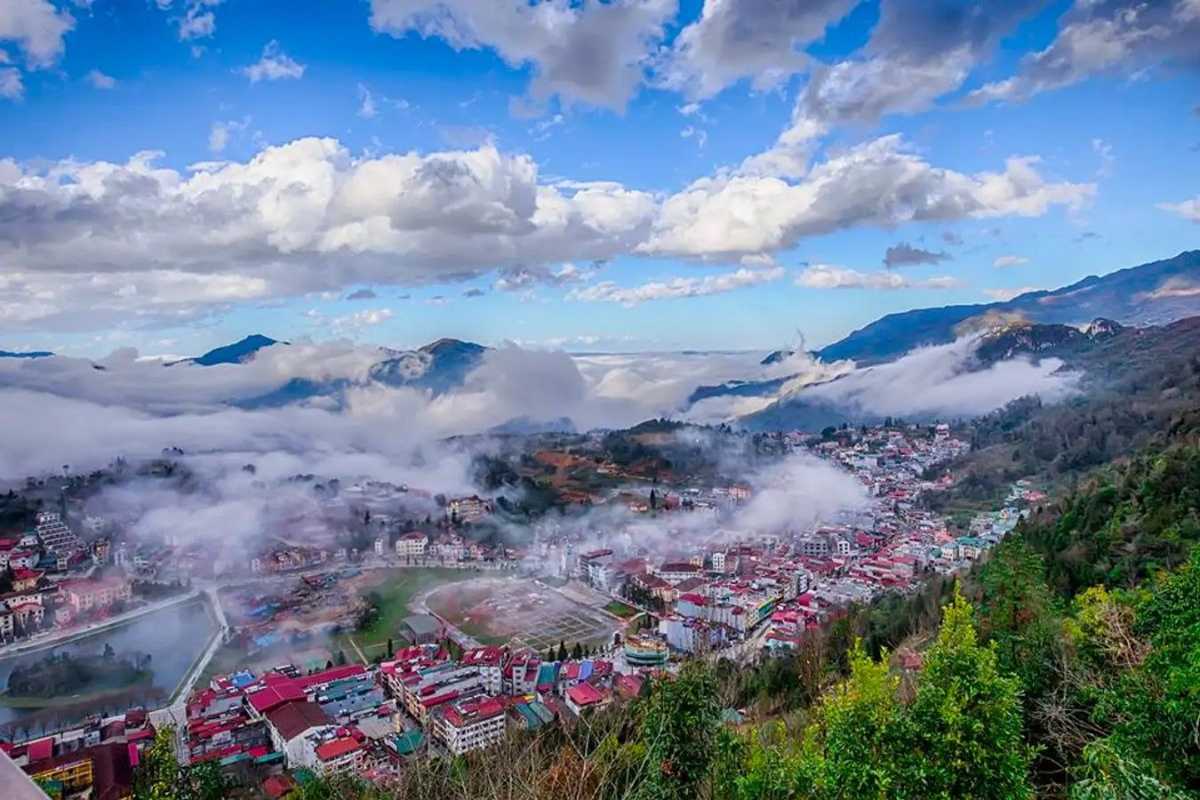
Unique Activities for Kids and Families
Exploring Ham Rong with kids is a rewarding adventure for all ages, thanks to a variety of family activities Sapa travelers rave about. This is a destination designed for joyful discovery, with gentle trails, interactive gardens, and plenty of open space for little ones to run and play. The enchanting Fairy Garden in particular is a favorite for Sapa for children—imagine a place where imagination blooms as brightly as the flowers.
You’ll find wide, easy paths perfect for strollers or tiny feet, picnic spots with panoramic views, and curious rock formations ready to spark young explorers’ imaginations. Rest stops and shade are plentiful, and the environment is both clean and secure. With family in mind, every part of Ham Rong promises smiles, surprises, and special memories.
Need tips on making the most of your family day out or want recommendations tailored to your kids’ interests? Asia Travel Links can help craft a personalized itinerary full of fun, learning, and relaxation.
Easy Trails, Fairy-Tale Gardens, and Playful Spots
These Ham Rong family trails and playful areas make the mountain extra kid-friendly Ham Rong:
- Garden Loop: A gentle, well-marked path looping through flowerbeds and shady groves—easy for even the youngest walkers.
- Fairy Garden: Full of whimsical statues, miniature houses, and natural playgrounds. Perfect for imaginative play and family photos.
- Discovery Rock Zone: Large, climbable boulders and hide-and-seek nooks where kids can safely explore.
- Interactive Corners: Educational signs and plant labels make the gardens a learning adventure as well as a visual feast.
- Rest & Snack Areas: Plenty of benches and scenic picnic spots for quick breaks or a family treat with a view.
Each stop invites play, curiosity, and togetherness—making Ham Rong Mountain a destination where families can relax and enjoy nature’s magic. Planning a trip for kids or multi-generational groups? Contact Asia Travel Links for extra tips and resources to keep everyone smiling on your mountain adventure.
David & Sarah's Family Fun: Adventures with Kids in the Fairy Garden
Traveling with kids always adds an extra layer of adventure, and our visit to Ham Rong Mountain in Sapa was no exception. Before we went, we scoured guides for Ham Rong family trip tips, wondering if it would truly be enjoyable for our energetic 6-year-old, Leo, and curious 4-year-old, Mia. We're thrilled to say it exceeded all expectations, especially our time in the whimsical Fairy Garden for children – it was pure magic! This wasn't just a sightseeing trip; it was an interactive playground for their imaginations.
Our day started with the usual parental scramble – snacks, water, sun hats, and a quick pep talk about staying close. The initial climb up Ham Rong was dotted with beautiful flower gardens, which captivated Mia's attention with their vibrant colors. Leo, ever the explorer, was more interested in the unusual rock formations that seemed to sprout from the earth. "Look, Dad, a giant dragon!" he'd exclaim, pointing to a moss-covered boulder. We let them set the pace, stopping frequently to let them investigate interesting plants or chase a particularly brave butterfly. The challenge was keeping them on the designated paths, as every twisted root or intriguing shadow seemed to call to their adventurous spirits.
The true highlight, though, was reaching the Fairy Garden. This section of Ham Rong is less about panoramic views and more about imaginative play. It’s a labyrinth of winding paths, quirky rock sculptures, and lush greenery that genuinely feels like stepping into a storybook. Our kids immediately transformed. Leo became a brave knight navigating a mystical forest, while Mia was a fairy princess searching for hidden treasures. They marveled at the rock formations, seeing faces and animals where adults might just see stone. There was one spot with a series of smooth, round boulders that they immediately dubbed "dinosaur eggs," spending a good fifteen minutes "hatching" them.
The sheer joy on their faces as they chased butterflies in the gardens was priceless. We found a small, gurgling stream that captured their attention for a solid ten minutes, as they tried to skip pebbles across the water. We brought small magnifying glasses, which turned the experience into a real-life scavenger hunt, examining moss, tiny flowers, and insect trails. The little bridge crossings and gentle inclines were perfect for their short legs, and we found plenty of shaded spots for quick snack breaks when their energy dipped. The biggest challenge was the occasional uneven step or slippery patch, so we had to hold hands more frequently, but their enthusiasm was infectious, making any minor difficulty disappear.
Our adventures with kids in the Fairy Garden were a testament to how well Ham Rong caters to young families. It’s a place that encourages curiosity and allows children to connect with nature in a truly engaging way. The unexpected twist was how much fun we had watching them discover. It reminded us to see the world through their eyes, full of wonder and unbridled joy.
For parents planning a Sapa kids activity at Ham Rong, here are our practical tips:
- Pace is Key: Don't try to see everything. Focus on a few sections that will genuinely engage them, like the Fairy Garden and lower flower gardens.
- Snacks & Hydration are Non-Negotiable: Pack plenty of water and energy-boosting snacks. Tired, hungry kids are quickly unhappy kids.
- Sturdy Shoes for Everyone: Even for the "easy" paths, the terrain can be uneven. Good closed-toe shoes with grip are essential to prevent slips.
- Sun Protection & Rain Gear: Sapa weather is unpredictable. Hats, sunscreen, and light rain jackets/ponchos are a must.
- Engage Their Imagination: Talk about the legends of the mountain, ask them what they see in the rock formations, or turn it into a game.
- Consider a Carrier for Toddlers/Babies: Strollers are impractical on most of Ham Rong's paths and stairs. A comfortable carrier is a much better option for very young children.
- Look for Rest Stops: There are benches and small cafes at various points. Use them for breaks and re-energizing.
- Don't Forget the Wipes! Muddy hands, sticky snacks – wipes are always a parent's best friend.
Our day at Ham Rong Mountain was not just a visit; it was an enriching family adventure filled with laughter, discovery, and unforgettable moments of shared wonder. It truly is a fantastic destination for families.
Recommendation: If you're traveling to Sapa with children, make sure Ham Rong Mountain is on your itinerary. The Fairy Garden for children especially is a delightful experience that encourages imagination and play. It's a fantastic Ham Rong family trip that offers plenty of Sapa kids activities and will create cherished memories for everyone.
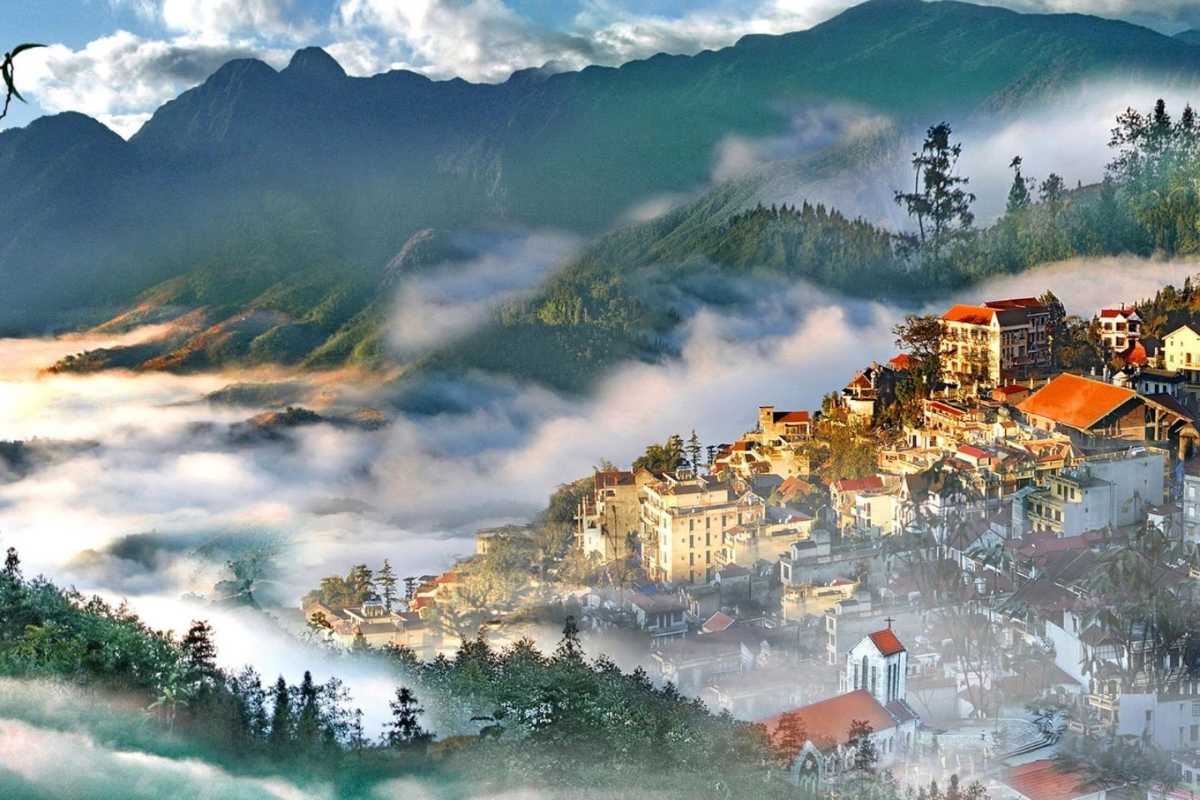
Photography Hotspots & Tips for Stunning Ham Rong Shots
Looking to make your Ham Rong photography tips count? Ham Rong Mountain is a playground for landscape photography Sapa enthusiasts, offering a canvas of cloudscapes, lush gardens, and sweeping panoramas. Each corner of the mountain brings a new opportunity—whether it’s mist rolling over the Cloud Yard, the symmetry of flower beds at dawn, or the golden glow on Sapa at sunset.
To capture the best photo spots Sapa is known for, arrive early or linger late for softer light. Walk the main paths, but don’t be afraid to venture into quieter corners for unique perspectives. Try framing shots with blooming flowers, winding trails, or the silhouette of a distant peak for dramatic impact.
Ready to up your game? These Ham Rong photography tips will help you capture shots that do justice to the mountain’s magic:
- Seek out leading lines—paths, fences, garden borders—to guide the viewer’s eye through your photo.
- Use mist and fog for atmosphere; soft conditions add mood and a dreamy quality to landscapes.
- Frame panoramic views from Cloud Yard, the upper terraces, or beside ancient stone formations.
- For portraits, position subjects with colorful flower beds or the Sapa skyline in the background.
- Switch between wide and zoom lenses to capture both sweeping vistas and tiny floral details.
Have a favorite photo angle or want feedback on your shots? Connect with Asia Travel Links for pro tips, custom photo walk ideas, or to join a group of like-minded photographers exploring Ham Rong Mountain together.
Sunrise, Sunset, and Weather-Dependent Photography Secrets
Nature’s moods change by the hour on Ham Rong—here’s how to turn any condition into a stunning photo opportunity:
- Ham Rong sunrise photos: Arrive before dawn; the soft pink and orange hues as the sun rises over Sapa create magical scenes. Use a tripod for long exposures and catch the first mist.
- Foggy Sapa photography: Don’t hide from the fog—embrace it! Fog adds mystery, depth, and diffused light. Focus on silhouettes, leading lines, and layers of garden and mountain.
- Golden hour: Late afternoon is perfect for warm, glowing light; shoot towards the sun for backlit flowers or the Sapa skyline lit with gold.
- Rainy days: Wet stones and saturated flowers pop in photographs. Protect your camera with a rain cover, and look for reflections in puddles for creative effects.
- Sapa sunset photography: Find a west-facing viewpoint in Cloud Yard or near the Stone Forest; use a wide lens to capture the sky’s changing colors over the town and hills.
Every weather brings its own opportunities—adapt your angle, timing, and camera settings for each. Want personal guidance, the best seasonal photo tips, or to share your favorite Ham Rong sunrise photos? Reach out to Asia Travel Links and become part of the mountain’s community of storytellers and shutterbugs.
Phong's Photography Hacks: Capturing the Perfect Sapa Cloudscape
Sapa is often called "the land of mist," and nowhere is this more evident than on Ham Rong Mountain, where the elusive cloudscapes dance around the peaks. As an amateur photographer obsessed with capturing natural beauty, my visit to Ham Rong was a personal quest for the perfect Sapa cloudscape photography shot. It wasn't easy, but through trial and error, I discovered some specific techniques for mist photography in Sapa that transformed my ordinary snaps into something truly magical. This wasn't just about pointing and shooting; it was about patience, understanding the light, and a few clever Ham Rong camera settings.
My first morning on Ham Rong, I made the classic mistake: I chased the sun. I’d seen countless bright, sunny Sapa photos online, and that’s what I expected. Instead, a thick, damp mist enveloped everything, reducing visibility to mere meters. My initial disappointment quickly turned into fascination. The world was muted, ethereal. This wasn't a hindrance; it was an opportunity. I realized the true beauty of Ham Rong often lies within the clouds, not above them.
I spent hours on the mountain over two days, experimenting. The challenge with a cloudscape is its constant movement and the flat light it often creates. My typical landscape settings weren't cutting it. I noticed that as the mist rolled in and out, new compositions appeared and vanished in seconds. It demanded quick thinking and adaptability. I experimented with different lens choices, finding that my wide-angle was great for capturing the sheer expanse when the clouds parted, but my telephoto became surprisingly useful for compressing perspective and highlighting isolated elements (like a lone tree or a distant peak) emerging from the fog.
One of my best shots came from an unexpected angle. Instead of aiming for the vast panorama, I found a spot near the Dragon Head rock formation where the mist was swirling around it, creating a dramatic, almost otherworldly aura. I used the rock as a foreground element, letting the mist become the "negative space" that accentuated its form. Another time, the sun briefly broke through a gap in the clouds, creating incredible rays of light piercing the fog – a phenomenon I learned to anticipate by watching the subtle changes in light and air density. It was about being present and ready to click the shutter at a moment's notice. Patience became my most valuable tool; waiting for the perfect swirl or the brief clearing often yielded the most rewarding results.
Here are Phong's Photography Hacks for capturing the Ham Rong Cloudscape:
- Embrace the Mist: Don't be disheartened by fog. It's often when Sapa is at its most magical. The mist creates atmosphere, simplifies compositions, and adds a mystical quality.
- Shoot in RAW: This is non-negotiable for mist photography in Sapa. RAW files retain far more detail in the highlights and shadows, giving you more flexibility in post-processing to bring out subtle textures and tones in the clouds.
- Manual Mode is Your Friend:
- Aperture (f/8 - f/11): For most landscapes, you'll want a decent depth of field to keep the foreground and background sharp.
- ISO (Low, as possible): Keep your ISO as low as possible (e.g., ISO 100-400) to minimize noise, especially in low-light, misty conditions.
- Shutter Speed (Variable): This is where it gets tricky. For misty scenes, you might need a slower shutter speed (e.g., 1/30s - 1/60s) to gather enough light. If the clouds are moving dramatically, a slightly slower shutter speed can create a beautiful, ethereal blur. If you want sharp cloud details, use a faster shutter.
- Lens Choice:
- Wide-Angle (16-35mm): Great for grand, sweeping cloudscapes when the mist is higher or breaking.
- Telephoto (70-200mm or longer): Surprisingly effective for isolating elements emerging from the mist, compressing perspective, and capturing the layered effect of distant clouds.
- Look for Foreground Interest: A lone tree, a rock formation, or even a pathway can add depth and scale to your cloudscape shot.
- White Balance: The mist can fool your camera. Experiment with a cooler white balance (e.g., "Cloudy" or manually setting Kelvin to around 5500K) to prevent your misty photos from looking too warm or yellow.
- Patience is a Virtue: The clouds on Ham Rong are constantly moving. The scene can change dramatically in minutes. Wait for the perfect moment when the light hits just right or a gap appears.
- Bring a Microfiber Cloth: The dampness will inevitably get on your lens.
- Use a Tripod (if possible): For slower shutter speeds in low light or mist, a tripod is invaluable for sharp images.
My journey to capture the Ham Rong cloudscape was as much about discovering photography techniques as it was about exploring the mountain itself. The fleeting, ever-changing nature of the mist made every shot a unique challenge and a unique reward.
Recommendation: If you're a photography enthusiast visiting Sapa, embrace the challenge of Sapa cloudscape photography on Ham Rong Mountain. Don't let the mist deter you; instead, see it as your canvas. Experiment with Ham Rong camera settings, practice patience, and you too can capture those truly magical, mist photography Sapa moments that will make your photos stand out.
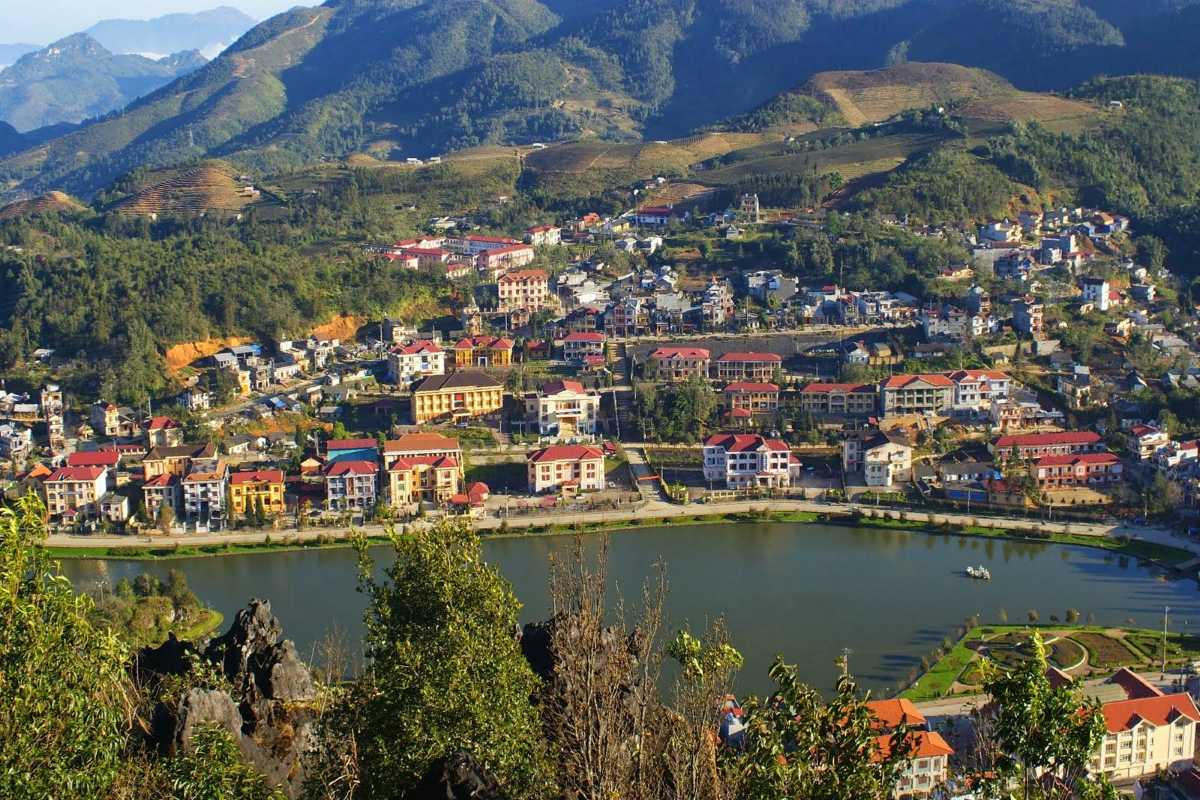
Beyond the Peaks: What to Eat & Drink on Ham Rong Mountain
A day spent exploring Ham Rong Mountain isn’t just about scenic walks and breathtaking views—it’s also a feast for your senses thanks to the unique food on Ham Rong Mountain. Scattered along the winding paths, you’ll find inviting stalls and cozy Ham Rong cafes offering Sapa mountain snacks that are as memorable as the vistas. From steaming cups of herbal tea to warm grilled corn and sweet sticky rice, the local treats are perfect for recharging after a climb or simply pausing to enjoy the moment.
Vendors often set up near panoramic viewpoints, turning snack breaks into mini-adventures with a view. Some favorite bites include grilled eggs, chewy rice cakes, roasted chestnuts, and fresh fruit in season. Don’t miss a stop at a viewpoint cafe, where you can sip Vietnamese coffee while gazing across the rolling clouds and colorful gardens of Sapa below.
Feeling inspired to try something new? Many stalls feature specialties prepared right before your eyes, and friendly vendors are always happy to offer recommendations. Curious about local flavors, or want help finding the best Sapa mountain snacks? Asia Travel Links is ready to guide your taste buds to the best hidden gems on Ham Rong Mountain. Enjoy every bite as you soak in the mountain’s sights, sounds, and unforgettable tastes.
Sophia's Culinary Journey: Must-Try Snacks on the Mountain Trails
Exploring Ham Rong Mountain isn't just about the breathtaking views and lush gardens; it's also a surprisingly delightful culinary journey! I'm a firm believer that food is an integral part of understanding a culture, and my Sophia's Culinary Journey on the mountain trails proved that even simple snacks can elevate a hiking experience. I discovered some truly must-try snacks on Ham Rong Mountain that fueled my adventure and added a delicious layer to my memories of Sapa.
My day started early, and while I’d had breakfast, the crisp mountain air and the gradual ascent of Ham Rong quickly built up an appetite. I wasn't expecting gourmet meals, but I was curious to see what local vendors might offer. As I wandered through the various garden sections, I noticed small, unassuming stalls tucked away, often near viewpoints or popular rest areas. The first aroma that truly caught my attention was the sweet, smoky scent of something grilling.
My first discovery was the grilled corn. It sounds simple, but this was unlike any grilled corn I'd ever tasted. The vendor, a friendly woman with a warm smile, was tending to a small charcoal grill. The corn was freshly picked, its kernels plump and slightly sweet, with a wonderfully earthy flavor from the open flame. She didn't add butter or salt, just pure, unadulterated grilled goodness. Holding the warm cob, its warmth seeping into my chilly hands, and biting into those tender, smoky kernels while gazing out at the misty Sapa valley was a truly sensory experience. It was the perfect, comforting fuel for my hike. This quickly became my favorite mountain food in Sapa.
Later, as I ventured deeper into the "12 Flower Garden" section, I spotted another vendor offering something I hadn't seen before: grilled eggs. These weren't just boiled eggs warmed up; they were grilled in their shells over charcoal, giving them a distinct, smoky aroma and a slightly firmer texture. Cracking open the shell, the white was subtly browned, and the yolk had an intensified creaminess. Paired with a pinch of local chili salt, it was a surprisingly addictive and protein-packed snack. It was unconventional but utterly delicious and felt incredibly authentic.
And of course, for hydration, there were always vendors with freshly squeezed fruit juices. The passion fruit juice, tart and tangy, with tiny crunchy seeds, was incredibly refreshing after a long climb. It was cold and invigorating, a perfect burst of flavor to quench my thirst. It beat plain water any day!
These simple but satisfying treats didn't just fill my stomach; they connected me to the local way of life. They were small moments of authentic Ham Rong street food culture, enjoyed amidst stunning natural beauty. They transformed my hike into a delightful tasting tour.
For anyone looking to add a delicious dimension to their Ham Rong Mountain adventure, here are my specific food tips:
- Look for Small Stalls: Don't expect large restaurants. The best finds are often small, informal stalls run by local families.
- Try the Grilled Corn: Seriously, it’s a revelation. Ask for it fresh off the grill.
- Dare to Try Grilled Eggs: If you see them, give them a go, especially with a sprinkle of the local chili salt.
- Fresh Fruit Juices: Opt for freshly squeezed juices (like passion fruit or orange) for a refreshing pick-me-up.
- Carry Small Denominations: Vendors prefer small Vietnamese Dong notes for easy transactions.
- Observe Cleanliness: While many stalls are rustic, use your judgment regarding hygiene. Generally, if it’s cooked fresh and looks popular, it’s a good sign.
- Pack Some of Your Own: While these snacks are great, it’s always wise to carry some extra water and perhaps a non-perishable snack of your own, especially for longer hikes.
My culinary detours on Ham Rong Mountain were an unexpected highlight, adding flavor and authenticity to every step. Don't underestimate the power of a simple, delicious Sapa local snack to make your mountain adventure even more memorable!
Recommendation: Don't just fill your camera with photos on Ham Rong Mountain; fill your stomach with the local delights! Experiencing the Ham Rong street food scene, even in its simplest form on the trails, is a must. These mountain food Sapa gems, from grilled corn to refreshing fruit juices, are the perfect way to truly savor your adventure and discover the delicious side of this incredible destination.

Exploring the Surroundings — What’s Nearby and Worth Your Time
A journey to Ham Rong Mountain becomes even richer when you look beyond its slopes to discover what Sapa has to offer. Around every corner, from the lively markets to the serene lakes, you’ll find something to make your adventure unforgettable. Whether you crave a taste of history, authentic local flavor, or a deeper dive into ethnic minority culture, Sapa’s surroundings deliver with easy access, charm, and plenty of inspiration for a perfect itinerary.
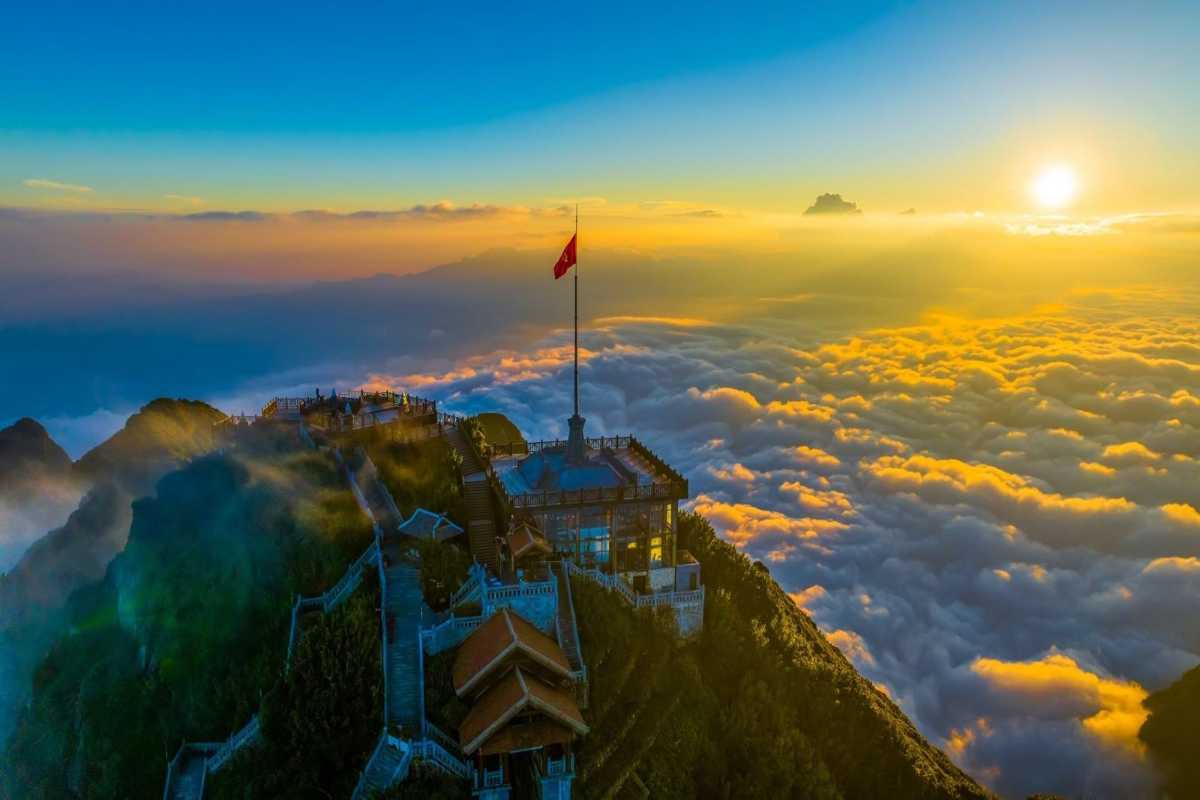
Sapa Stone Church and Central Town Highlights
Standing proudly in the heart of town, the Sapa Stone Church is more than just an architectural landmark—it’s the most iconic symbol of Sapa and a window into the region’s French colonial past. Many travelers begin their exploration here, drawn by its striking stonework and the open plaza that often fills with lively market scenes and cultural performances. The church is the perfect starting point for discovering other Sapa town attractions.
Some highlights to explore in Sapa’s center include:
- Sapa Stone Church: Marvel at the impressive 19th-century stone architecture and vibrant town square atmosphere.
- Sapa Lake: A peaceful spot for a morning walk, reflecting the clouds and the daily rhythms of town life.
- Sapa Market: Dive into a world of color and aroma, with bustling stalls selling everything from mountain-grown tea to handwoven textiles.
- What to see in Sapa center: Don’t miss wandering the side streets lined with coffee shops, bakeries, and local art galleries.
Sapa’s town center is walkable, atmospheric, and ideal for sampling the region’s culture at your own pace. Take time to pause at a lakeside bench or sip coffee with a view of the mountains rising in the distance.
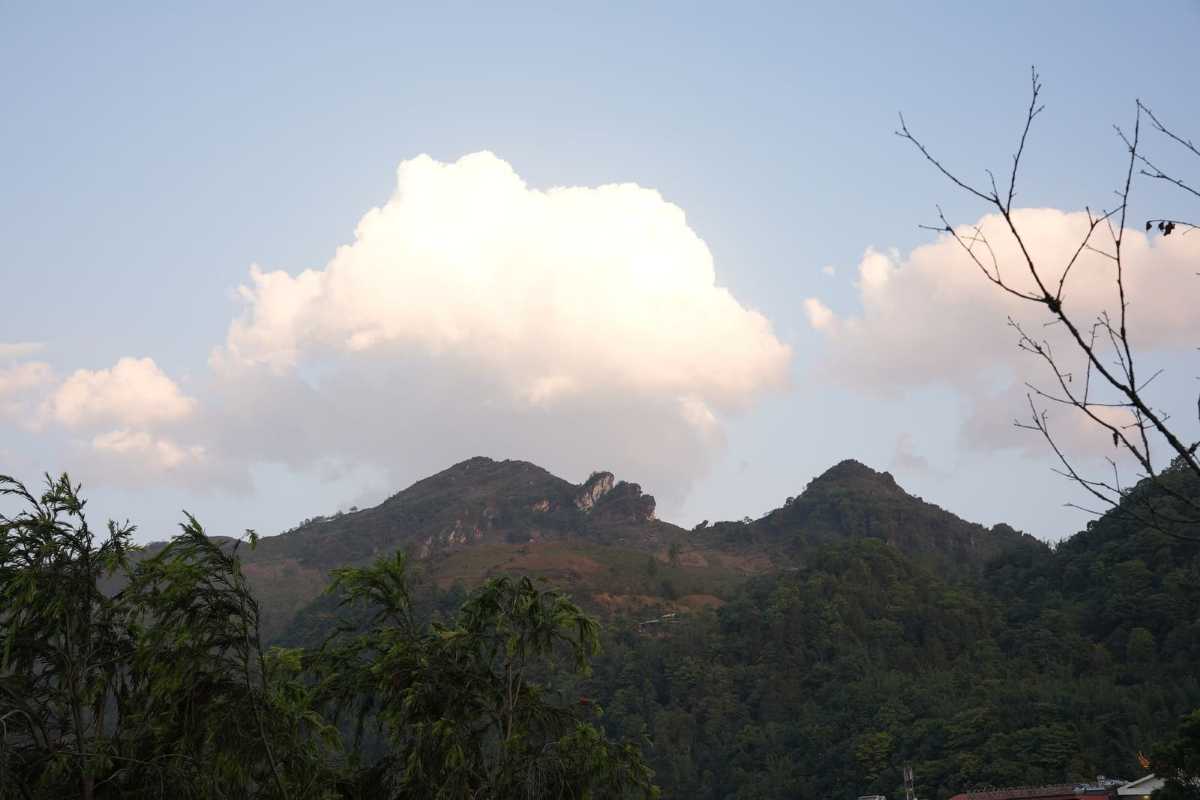
Exploring Cat Cat Village and Ethnic Minority Culture
Just a short walk or motorbike ride from the center, Cat Cat Village Sapa is a living showcase of Black H'mong culture and Sapa ethnic village life. The journey itself, descending through green rice terraces, is a highlight—and what awaits is a vibrant mix of traditional houses, water wheels, and craft workshops.
Cat Cat Village’s appeal lies in its immersive cultural experiences:
- Handicraft demonstrations: Watch local artisans dye indigo fabric, weave hemp, and embroider textiles—ancient skills passed down through generations.
- Black H'mong culture: Engage with welcoming villagers and sample homemade specialties, from herbal tea to sticky rice cakes.
- Walking tour: Wander scenic paths alongside waterfalls, flower gardens, and stilt houses built from timber and stone.
Combining a visit to Ham Rong Mountain with Cat Cat Village means experiencing both Sapa’s natural wonders and its living traditions. It’s an itinerary that offers insight, connection, and plenty of photo opportunities—ideal for those seeking a deeper understanding of local heritage.
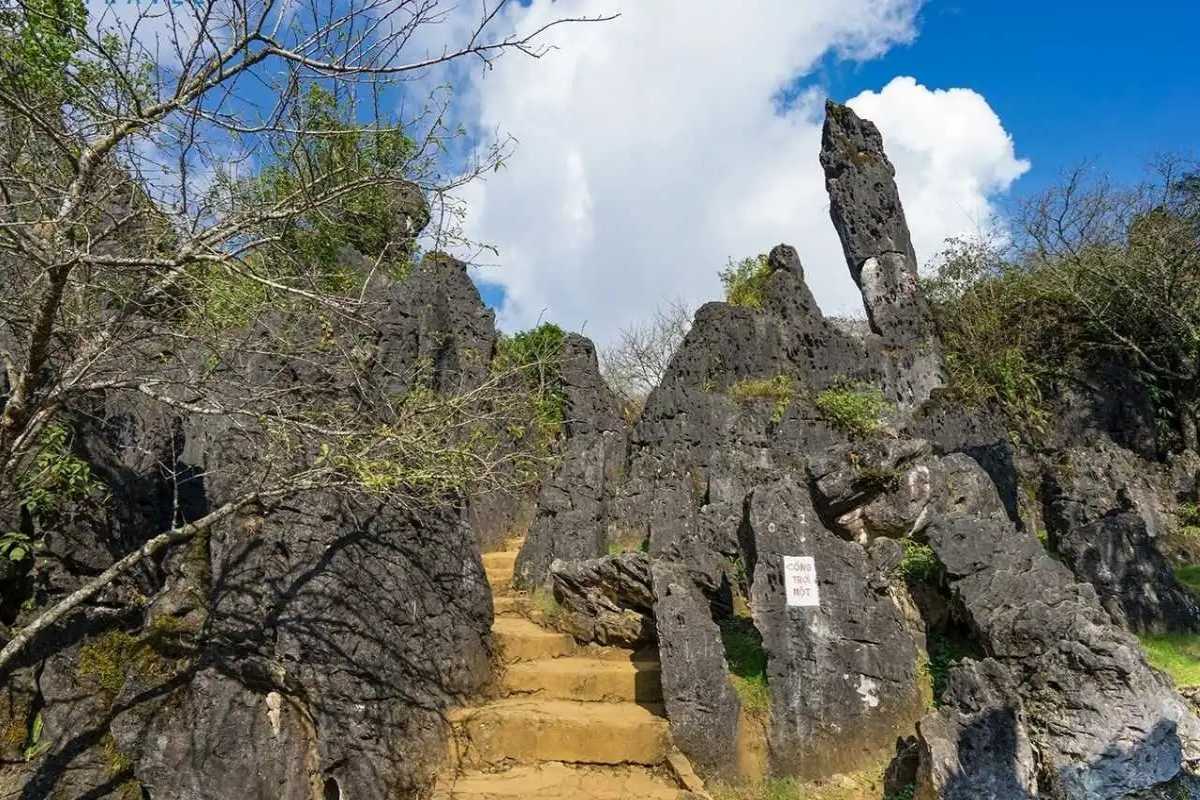
Fansipan Mountain — Should You Combine Your Visit?
If you’re eager to summit more than one legendary peak, Fansipan Mountain Sapa—the "Roof of Indochina"—awaits just a short ride away. But should you combine Ham Rong and Fansipan in one day? Here’s what to consider.
- Ham Rong vs Fansipan: Ham Rong Mountain is famed for its lush gardens, panoramic views of town, and cultural shows—all accessible by a scenic walk from central Sapa. Fansipan, by contrast, towers above the clouds at 3,143 meters and is reached via the record-breaking cable car, offering a true high-altitude adventure.
- Combine Sapa attractions: Ambitious travelers can see both, but plan for a full day and start early. While Ham Rong invites lingering strolls and spontaneous discoveries, Fansipan’s summit is all about the thrill of altitude and dramatic vistas.
- Logistics: Factor in ticket queues, cable car schedules, and weather, which can change rapidly at higher elevations.
- Experience difference: Ham Rong delivers a gentle, garden-filled escape close to the heart of Sapa, while Fansipan is a feat of engineering and a true bucket-list conquest.
Whether you choose one or both, the mountains of Sapa promise discovery at every turn. For custom itinerary planning, or to blend both peaks into a seamless day, reach out to Asia Travel Links for local insight and the latest updates on weather, cable car tickets, and trail conditions.
If you want to make the most of your time in Sapa, exploring these surroundings ensures your journey is as rewarding and unique as the views from Ham Rong Mountain itself.

Where to Eat, Drink, and Relax Near Ham Rong
A day exploring Ham Rong Mountain isn’t complete without sampling some of the best restaurants near Ham Rong, savoring a cup at cozy Sapa coffee shops, or indulging in the flavors of bustling Sapa street food. Just steps from the mountain’s base, you’ll find welcoming local eateries, hillside cafes with sweeping views, and vibrant food stalls where the scent of grilled meats and fresh herbs fills the air.
Whether you’re in the mood for a leisurely sit-down meal, a quick coffee break with a view, or a taste of authentic street snacks, Sapa has you covered. Many spots offer mountain vistas and genuine local hospitality, making them perfect for unwinding after your hike or for fueling up before your adventure begins.
Take time to wander a few minutes from the main gate—delicious discoveries are always close by in Sapa.
Local Eateries, Coffee Shops, and Street Food Stalls
Finding a spot to recharge is easy with these trusted picks, each known for their unique ambiance and standout specialties:
- A Quynh Restaurant: Famous for authentic Sapa food like "thang co" (a traditional highland stew), grilled skewers, and hotpot. The rustic décor and friendly service create a cozy, mountain-town vibe.
- The Hill Station Signature Restaurant: Savor Vietnamese fusion dishes and creative cocktails, all with panoramic windows looking out over the town. A favorite among travelers for its relaxed yet stylish atmosphere.
- Café in the Clouds: This is one of the top Sapa cafes with view—perfect for relaxing over local tea, Vietnamese coffee, or homemade cake while gazing out across the valley and cloud-draped peaks.
- Sapa street food stalls: Don’t miss the evening street market stalls near the Sapa Stone Church, where you can snack on grilled corn, sticky rice, or sweet potatoes roasted over charcoal, as well as "banh mi" sandwiches and savory pancakes made to order.
No matter which you choose, each spot offers a slice of local life and flavor—so let your appetite lead the way. Ready to explore? Stopping at any of these eateries near Ham Rong Mountain is sure to add a memorable, tasty layer to your Sapa journey.

Recommended Itineraries for Different Traveler Styles
No matter your pace or priorities, a well-structured Ham Rong itinerary helps you make the most of your Sapa visit. Whether you’re squeezing in a quick adventure, planning a full day of exploration, or creating magical memories with your family, these suggested routes cater to every style. Choose the plan that matches your interests, energy, and travel group for a smooth, rewarding experience.
One-Day, Half-Day, and Family-Friendly Suggestions
Here are three easy-to-follow options to help you plan, explore, and enjoy the highlights at your own speed:
• Half-Day Ham Rong Itinerary:
- 08:00: Depart from central Sapa and walk to the entrance of Ham Rong Mountain
- 08:30: Begin the scenic ascent—visit flower gardens and Orchid Garden
- 09:30: Pause at Cloud Yard for photos and sweeping town views
- 10:15: Explore Stone Forest and nearby fairy-tale gardens
- 11:00: Descend and enjoy coffee or street food nearby
• Sapa One Day Trip (Full-Day Ham Rong Experience):
- 08:00: Arrive at Ham Rong Mountain entrance
- 08:15: Hike through themed gardens and panoramic viewpoints
- 10:00: Stop at Cloud Yard (Sân Mây) for sunrise or cloud watching
- 11:00: Explore the Stone Forest and Fairy Garden trails
- 12:00: Lunch at a nearby Sapa eatery or café
- 13:30: Attend an ethnic cultural show if available
- 15:00: Discover hidden corners and photography spots
- 16:00: Unwind at a coffee shop or snack stall before returning to town
• Family Sapa Itinerary (Kid-Friendly, Relaxed Pace):
- 09:00: Arrive at Ham Rong Mountain with family
- 09:15: Start with the Orchid and Flower Gardens—let kids marvel at colors and scents
- 10:15: Easy walk to Fairy Garden for imaginative play and fun photos
- 11:00: Snack break at the nearest food stall (try local sweet potatoes or corn)
- 12:00: Explore easy trails to hidden spots and enjoy gentle views
- 13:00: Lunch in Sapa town with family-friendly menus
- 14:30: If energy allows, catch a cultural performance or visit a nearby park
Whichever Ham Rong suggested itinerary you follow, you’ll discover new highlights and enjoy a seamless travel day. Feel free to adapt the timing or skip steps to match your group’s style—there’s no wrong way to explore Sapa and its iconic mountain. If you’d like personalized tips or help with bookings, our team at Asia Travel Links is always ready to support your journey.

Accommodation Options Near Ham Rong Mountain
Finding the right place to stay close to Ham Rong Mountain is easy with Sapa’s variety of trusted hotels, cozy guesthouses, and beautiful boutique lodges. Whether you’re looking for value, comfort, or luxury, there are plenty of well-rated options within walking distance or a quick drive from the entrance.
• Budget Hotels Near Ham Rong Sapa:
- Sapa Odyssey Hostel: Friendly staff, comfortable beds, and great mountain views—perfect for backpackers or solo travelers on a budget.
- Little View Homestay: A homely vibe, basic amenities, and helpful local hosts make it a popular choice for travelers seeking simplicity and authenticity.
- Pumpkin Hotel Sapa: Clean rooms and a central location just a short walk from the main street.
• Mid-Range Accommodation Sapa Mountain:
- Sapa Horizon Hotel: Known for excellent service, comfortable rooms, and panoramic views of the mountains.
- Amazing Hotel Sapa: Offers a swimming pool, restaurant, and family-friendly rooms, only minutes from Ham Rong Mountain.
- Phuong Nam Hotel: Good value for money with spacious rooms and a restaurant on site.
• Luxury & Boutique Best Places to Stay Sapa:
- Hotel de la Coupole MGallery: French-colonial design meets mountain grandeur; perfect for those wanting a unique, luxury stay with all amenities.
- Silk Path Grand Resort & Spa Sapa: Upscale comfort, lush gardens, spa facilities, and impeccable views across Sapa.
- BB Hotel Sapa: Offers classic elegance, well-appointed rooms, and close proximity to both Ham Rong Mountain and Sapa’s town center.
With so many accommodation choices, you’ll easily find a place that matches your needs and style, whether you’re visiting for a quick adventure or a longer escape. If you need help booking a room or finding the best spot for your trip, reach out to us at Asia Travel Links for personalized recommendations and seamless reservations. Enjoy your stay in Sapa—it’s the perfect base for discovering Ham Rong Mountain and beyond!

Conservation, Culture, and Community at Ham Rong Mountain Sapa
Protecting the magic of Ham Rong Mountain Sapa means more than preserving its spectacular views and flower gardens. Here, every step up the mountain helps sustain local traditions, rare plants, and the future of the wider Sapa community. Responsible travel is woven into every garden path and cultural show, offering you the chance to make a positive impact with each visit.
If you care about conservation, heritage, and supporting local people, Ham Rong Mountain Sapa is the place where your visit truly matters.

How Ham Rong Preserves Sapa’s Natural Beauty and Ethnic Traditions
Ham Rong Mountain leads by example when it comes to genuine conservation and cultural preservation. The vibrant botanical gardens are not just for show—they serve as sanctuaries for endangered species and native plants unique to Sapa. Dedicated teams carefully protect delicate orchids, ferns, and rare blooms, ensuring that the garden’s beauty is never at the expense of its biodiversity.
Meanwhile, cultural performances and handicraft sales on the mountain directly benefit local ethnic communities. When you watch a traditional dance or purchase authentic, handmade crafts, you’re helping to keep these centuries-old customs alive. This living heritage turns a day out at Ham Rong Mountain into an act of positive participation. Your appreciation and curiosity encourage further conservation and help sustain local livelihoods.
Traveling with purpose here means enjoying stunning views and real culture—while knowing your presence plays a small role in the preservation of both.
Before you plan your visit, remember that your travel choices can shape the future of Sapa for generations to come.
Botanical Gardens, Endangered Flora, and Sustainable Practices
The heart of conservation at Ham Rong Mountain lies in its botanical gardens and ongoing sustainability efforts.
- Ham Rong botanical garden maintenance: A team of local gardeners tends the landscape year-round, nurturing hundreds of rare and indigenous plant species.
- Protection of Sapa endangered plants: Strict rules prevent plant harvesting and restrict access to the most sensitive areas, safeguarding native flora.
- Sustainable tourism Sapa initiatives: The site encourages reusable water bottles, composting, and minimal plastic use, while information boards teach visitors how to travel lightly.
- Waste management and eco-friendly habits: All staff and visitors are encouraged to leave no trace, with clear signage, accessible bins, and regular clean-ups.
These measures not only protect the natural beauty of Ham Rong Mountain but set a standard for other Sapa attractions. Travelers are asked to join these efforts—pack out all rubbish, use eco-friendly products, and respect signs protecting fragile habitats. Every small action makes a difference in sustaining the mountain’s unique environment.
By supporting these green practices, you help ensure that the wonder of Ham Rong Mountain Sapa endures for future travelers to discover and cherish.

Supporting Local Communities and Responsible Tourism
Traveling to Ham Rong Mountain and the wider Sapa area is about much more than just sightseeing. Every thoughtful choice you make—where you eat, what you buy, and who you hire—can directly support local livelihoods and empower families throughout the region. Choosing responsible tourism at Ham Rong Mountain means your money goes beyond entrance fees and souvenirs. It’s a way to support Sapa locals and help preserve the beauty and authenticity of the destination for future generations.
Here’s how you can practice responsible tourism Ham Rong and embrace ethical travel Sapa:
- Seek out local guides: Hiring a guide from the Sapa area gives you richer stories and insights, while providing direct income to their families.
- Eat at locally owned restaurants: These spots use family recipes, source ingredients from village farms, and reinvest earnings back into the community.
- Buy authentic handicrafts: Hand-woven textiles, embroidered scarves, and wood carvings sold at Ham Rong Mountain markets are often made by ethnic minority artisans. Buying directly from stalls or co-ops ensures your purchase supports real craftspeople.
- Choose homestays or small guesthouses: Staying with local hosts keeps your travel dollars in the region and fosters genuine cultural exchanges.
- Respect local customs and ask questions: Polite curiosity and respectful behavior open doors to meaningful connections and understanding.
Small choices can add up to a major impact—helping Sapa grow sustainably while preserving what makes it unique. For more guidance or to connect with vetted local experts, you can always reach out to Asia Travel Links for recommendations.
How Your Visit Makes a Difference
Every time you choose a local meal, book a community tour, or purchase an artisan souvenir, you create tangible benefits for people in Sapa.
- Direct income for local families: Tourism provides jobs and reliable earnings for guides, shopkeepers, farmers, and craftspeople.
- Skills training and community development: Some ticket proceeds and tourism investments fund language classes, hospitality training, and school programs.
- Preservation of traditional arts: Buying from artisan stalls helps keep skills like weaving and embroidery alive, passing them on to the next generation.
- Improved infrastructure and public services: Increased tourism revenue often supports better roads, water systems, and health clinics in remote villages.
- Empowerment of women and minority groups: Many small businesses and handicraft initiatives are run by women and ethnic minorities, promoting inclusion and self-sufficiency.
Your presence and choices matter in Sapa. When you support community-based tourism, you help shape a more sustainable and equitable future for the region. If you’d like to learn more about responsible travel opportunities, email us at Asia Travel Links or speak with your local hosts during your trip.
Chloe's Ethical Souvenir Hunt: Supporting Sapa's Craftspeople
For me, souvenirs are more than just trinkets; they’re tangible memories, often infused with the spirit of the place and its people. In Sapa, with its rich tapestry of ethnic minority cultures, my souvenir hunt became a conscious mission: to find ethical souvenirs in Sapa that truly allowed me to support local artisans in Sapa. It wasn’t just about buying something pretty; it was about connecting with the makers and ensuring my purchase genuinely benefited the community. This journey was as rewarding as any scenic hike.
My search began not in the bustling main market, but by looking for smaller, less prominent stalls and shops. I’d read that many of the handicrafts sold in Sapa are mass-produced, and I was determined to find authentic, handmade items. My approach was simple: I looked for artisans actually working on their crafts, or small family-run shops where the pieces felt unique and had a story behind them.
I remember vividly wandering past a small, unassuming shop nestled on a side street near the Sapa Stone Church, slightly away from the main tourist drag. Inside, an elderly H'mong woman, her hands gnarled from years of work, sat quietly, meticulously stitching intricate patterns onto a piece of indigo-dyed fabric. Her concentration was absolute. This was exactly what I was looking for. I gently approached, and with the help of a local guide (who I had hired for a trekking tour the previous day and kindly agreed to assist me), I struck up a conversation.
Her name was Mae, and she explained, through my guide, that she had been doing this indigo batik and embroidery since she was a young girl, learning from her mother. She showed me how the fabric was dyed using natural indigo plants and how each motif had a specific meaning, representing aspects of H'mong life like rice paddies, mountains, or family. The Sapa handicrafts she offered – small coin purses, delicate scarves, and wall hangings – were not perfect in a factory-produced sense, but their slight irregularities made them even more beautiful and authentic. They carried the warmth of her hands and the wisdom of generations.
I ended up purchasing a beautifully embroidered indigo scarf. The vibrant blue, the soft yet durable texture of the fabric, and the intricate, hand-stitched details were captivating. But the true value wasn't just in the scarf itself; it was in knowing that my money was going directly to Mae. Her eyes crinkled with a genuine smile as I handed her the cash, and she gave me a small, unexpected gift – a tiny, hand-woven bracelet. This brief local interaction made my purchase incredibly meaningful. It wasn't just a transaction; it was a moment of connection, an affirmation that my visit was contributing directly to the livelihood of the very people whose culture I had come to appreciate.
This experience changed how I approach souvenir shopping. It showed me the power of conscious consumerism, where every purchase can be a small act of support and appreciation.
For those eager to find ethical souvenirs in Sapa and genuinely support local artisans in Sapa, here are my actionable tips:
- Seek Out the Makers: Look for smaller workshops, co-ops, or individuals actively crafting their wares. This often means venturing slightly away from the most crowded tourist areas.
- Ask About the Origin: Don't be afraid to ask where the product came from, who made it, and how it was made. A reputable artisan will be happy to share.
- Look for Authenticity, Not Perfection: Handmade items will have slight variations. Embrace these as signs of genuine craftsmanship, not flaws.
- Bargain Respectfully: Bargaining is part of the culture, but do so with a smile and a fair mind. Remember, a few dollars might mean little to you but a lot to the artisan.
- Consider Cooperatives: Some organizations work directly with ethnic minority communities to sell their products at fair prices. Research these before you go.
- Learn a Few Basic Phrases: Even "Hello" (Xin chào - sin chow) and "Thank you" (Cảm ơn - gahm un) in Vietnamese can open doors to warmer interactions.
- Prioritize Story Over Price: A slightly more expensive item that directly supports a family or community initiative is far more valuable than a cheaper, mass-produced alternative.
- Respect Their Time: If you're observing them work, be mindful of not interrupting their flow for too long.
My ethical souvenir hunt in Sapa was one of the most fulfilling parts of my trip. It allowed me to take home not just beautiful objects, but also stories, connections, and the knowledge that my visit had a positive impact.
Recommendation: When you visit Sapa, transform your souvenir shopping into a meaningful experience. Make a conscious effort to find and purchase ethical souvenirs in Sapa directly from the local craftspeople. By seeking out authentic Sapa handicrafts and choosing to support local artisans in Sapa, you'll take home more than just a memento; you'll take home a piece of their story and the satisfaction of knowing you've made a positive difference.

Cultural Etiquette and How to Respect Local Customs
Travelers to Sapa have the unique privilege of meeting a diverse range of ethnic minority communities, each with their own customs and traditions. Practicing proper Sapa cultural etiquette is key to ensuring your presence is positive and respectful. Simple gestures, mindful words, and an open attitude go a long way toward building meaningful connections and avoiding misunderstandings.
Here’s how to respect local customs Sapa and succeed in interacting with ethnic minorities Sapa:
- Always ask permission before taking photos of people or their homes. A friendly smile and gesture can bridge any language gap.
- Dress modestly, especially when visiting villages or attending cultural performances. Covering shoulders and knees is a sign of respect.
- Be gentle and nonintrusive when observing local activities or ceremonies—never touch or disturb sacred objects.
- Bargain politely and with a smile in markets, but avoid aggressive haggling. Accept “no” with grace.
- Refrain from giving money or candy directly to children. If you wish to help, ask your local guide about community-approved donation options.
- Learn a few simple greetings in the local language, or use respectful gestures like a slight bow.
- Avoid public displays of affection or loud, disruptive behavior in villages and sacred spaces.
- Listen and observe before acting—when in doubt, follow your guide’s lead or watch what locals do.
Embracing these small but important etiquette steps ensures your time in Sapa is memorable for all the right reasons. For more personalized cultural tips, you can always reach out to Asia Travel Links or consult with your host family.
What to Know Before You Go
To help you remember the essentials of good manners in Sapa, here’s a quick list of key Sapa cultural tips and dos and don'ts Sapa for your visit:
- Do: Ask before taking photos of people or private property.
- Do: Dress modestly in villages and sacred places.
- Do: Greet elders and hosts with a smile or gentle nod.
- Don’t: Give gifts or money directly to children.
- Don’t: Touch sacred objects or altars.
- Don’t: Raise your voice or argue in public spaces.
- Do: Practice patience and follow your guide’s advice.
- Don’t: Assume everyone wants to engage—respect personal space.
A little effort goes a long way toward making your journey respectful, warm, and welcome for both you and your hosts in Sapa. For more etiquette insight or a guided village visit, contact Asia Travel Links or ask your local host on arrival.

Smart Travel Tips for an Unforgettable Ham Rong Experience
A visit to Ham Rong Mountain Sapa rewards you with breathtaking views, vibrant gardens, and rich cultural encounters—but only if you’re well-prepared. Savvy travelers know the difference between a smooth, memorable journey and one full of hassles comes down to a few essential travel smarts. The following practical tips, insider checklists, and local insights will help you travel safer, more comfortably, and with greater confidence, so your time on the mountain is truly unforgettable.

Packing and Preparation Checklist (For All Seasons)
No matter when you plan your trip, a smart packing approach makes all the difference on Ham Rong Mountain Sapa. Use this clear, season-proof checklist to stay ready for anything:
- Weather-Ready Clothing: Lightweight layers for cool mornings, rain jacket or poncho for sudden showers, sun hat or cap for midday sun.
- Footwear: Comfortable, sturdy shoes with good tread—avoid sandals on wet or rocky trails.
- Essentials: Refillable water bottle, sunscreen, insect repellent, sunglasses, light snacks.
- Health & Safety: Personal medications, basic first aid kit, hand sanitizer or wipes.
- Documents: Identification, a small amount of cash, booking confirmations (printed or digital).
- Extras: Camera or phone for photos, portable charger, lightweight backpack for all your gear.
A well-packed bag means less worry and more freedom to enjoy the mountain’s natural wonders. Before you head out, double-check your essentials and share this Ham Rong travel checklist with your travel group.

Safety and Comfort on the Mountain
Safety comes first when exploring the heights and winding trails of Ham Rong Mountain Sapa. Here’s how to ensure a secure and comfortable visit, whatever the conditions:
- Stay on marked paths—avoid shortcuts and do not stray onto closed or overgrown trails.
- Monitor weather updates and be ready to adjust plans during sudden fog or rain.
- Hydrate regularly and carry water, especially on warm, sunny days.
- Rest as needed—benches and shaded spots are found along most trails.
- Watch your step on steep or slippery stairs, particularly after rainfall.
- Bring a basic first aid kit for small scrapes, and know the nearest emergency contacts: Sapa Tourist Information Center (+84 214 3871975) and the local medical clinic (ask your hotel for details).
- Notify someone of your route if hiking alone.
Prioritizing these Ham Rong safety tips ensures your mountain experience is both fun and worry-free.

Money-Saving Tips and Avoiding Tourist Traps
A little local know-how can stretch your budget and keep your Ham Rong Mountain Sapa trip authentic. Here’s how to save money and avoid the most common tourist traps:
- Eat where the locals eat: Skip hotel restaurants and try family-run diners or food stalls near Sapa Market for real value.
- Use public transport or shared taxis instead of pricier private cars.
- Double-check prices before purchasing souvenirs or snacks from vendors on the mountain.
- Book tours and tickets directly with official counters or reputable agencies—avoid unlicensed street sellers.
- Beware of unsolicited “guides” who offer services on the trail, and politely decline if you’re not interested.
- If something feels overpriced or too pushy, trust your instincts and move on.
By following these Ham Rong money saving tips, you’ll get the most from your visit and avoid inflated prices or scams.

Where to Find More Local Insights (Tourist Info, Guides, Maps)
Staying informed and connected helps you make the most of every moment in Sapa and on Ham Rong Mountain. For trustworthy, up-to-date advice and support, use these resources:
- Sapa Tourist Information Center (1 Fansipan Road): Maps, event updates, and English-speaking staff.
- Asia Travel Links: Reach out for custom guides, bookings, and advice at https://asiatravellinks.com/ or email us at contact@asiatravellinks.com.
- Local Hotels and Guesthouses: Most can provide printed Sapa maps and recommend trusted guides.
- Digital Maps: Download offline maps or apps before you go for easy navigation (Google Maps, Maps.me).
- Community Boards: Check for local events or guide contacts at Sapa Market and town center.
When in doubt, ask a local or your host for guidance. Staying resourceful with these Sapa tourist information tips can turn any question into an opportunity for deeper discovery.

Accessibility for All Travelers: Kids, Seniors, and People with Limited Mobility
Ham Rong Mountain Sapa welcomes a wide range of travelers, but certain paths and features need special attention for maximum comfort and safety:
- For families with children: Stick to gentler, well-marked trails; bring carriers for little ones as strollers are not practical on steps and uneven ground.
- For seniors: Take it slow, use handrails where available, and pause at regular rest points.
- For those with mobility challenges: Some main garden areas are accessible, but many viewpoints require stairs; check with your hotel or a local guide for the best accessible routes.
- For all: Avoid climbing in wet or foggy conditions, and plan visits during off-peak hours for a quieter, safer experience.
- Facilities: Public restrooms are available near the main entrance and in central garden zones.
With a little planning and the right information, Ham Rong Mountain Sapa is a rewarding destination for everyone. For personalized accessibility advice or local guide services, reach out to Asia Travel Links.

Why You’ll Love Ham Rong Mountain — Final Thoughts & Friendly Advice
After all the trails, blooms, and cultural performances, what truly sets Ham Rong apart is how it brings the spirit of Sapa alive—from misty panoramas to the warmth of local smiles. Whether you’re drawn by the mountain’s legends, the kaleidoscope of its flower gardens, or the thrill of sunrise above the clouds, every step on Ham Rong is a reminder that discovery is more than sightseeing—it’s about connection, wonder, and stories you’ll keep long after the journey ends.

What Past Visitors Say — Top Reviews and Testimonials
Real travelers say it best—here’s what people love about Ham Rong and Sapa:
- “The views from the summit are breathtaking—my favorite memory of all of Sapa!”
- “So many beautiful flowers everywhere. The kids were enchanted by the Fairy Garden and the peaceful trails.”
- “We caught a traditional dance show at the top and it was magical—full of color and local music.”
- “It’s a perfect half-day adventure if you want to enjoy Sapa’s nature without a strenuous trek.”
- “Great value for families—easy access from the center and lots to see for all ages.”
These Ham Rong reviews echo a common theme: everyone finds something special, whether it’s the panoramic landscapes or unexpected cultural moments. If you’re looking for a destination with heart, you’ll find it here.
Curious what else makes Ham Rong so memorable? Read more Sapa visitor testimonials and you’ll see why this mountain stays at the top of traveler recommendations.
If you had a wonderful experience, consider leaving your own feedback to help future explorers know what people say about Ham Rong.

Inspiring You to Explore Sapa Beyond the Usual Spots
Explore Sapa beyond the famous mountain, and you’ll discover a region filled with hidden treasures and untold stories. Let the magic of Ham Rong inspire you to seek the quiet beauty of early morning markets, hike new trails through ancient valleys, or join a cooking class with a local family.
Some of the best adventures begin off the beaten path—maybe a sunrise at a remote viewpoint, a spontaneous meal in a mountain village, or a quiet walk by the lakeshore. As you plan your time in Sapa, think beyond the checklist: let curiosity guide you, and you’ll uncover the region’s true character.
Use your visit to Ham Rong as the starting point for new journeys—chase the spirit of discovery, and you’ll always find something worth remembering. Don’t hesitate to reach out to Asia Travel Links if you need inspiration or custom itineraries for Sapa off the beaten path or want to discover Sapa with trusted local advice.

Share Your Own Ham Rong Mountain Adventures!
Your stories bring Ham Rong and Sapa to life for fellow travelers! If you’ve captured a stunning sunrise, found a secret trail, or tried a snack you’ll never forget, we invite you to share Ham Rong experience and inspire others.
- Post your best Ham Rong photos on Instagram or Facebook using #HamRongSapa and #AsiaTravelLinks for a chance to be featured.
- Share your favorite tips, surprises, or must-see spots in the comments section below.
- Write a quick review or full story about your day—real experiences help build a supportive travel community.
Your unique perspective adds to the collective adventure. Let’s connect, celebrate, and grow the circle of explorers who call Sapa’s mountains home, even if just for a day. Whether you’re a photographer, storyteller, or first-time visitor, every contribution helps create better journeys for everyone.
If you have travel questions, special needs, or want to plan your own adventure, feel free to email us at contact@asiatravellinks.com or check out more inspiration at Asia Travel Links. We love hearing from fellow travelers and look forward to seeing your Sapa travel stories!
Nhật Hoàng
Faqs
Ham Rong Mountain Sapa is one of the most popular attractions in Sapa, known for its stunning landscapes, flower gardens, and sweeping views of the surrounding valleys. Visitors love it for its easy access, panoramic viewpoints, and vibrant mix of nature and culture.
You can explore colorful flower gardens, rock formations shaped by legend, and several viewpoints overlooking Sapa town. The mountain is also famous for its cultural shows and unique Fairy Garden area, making it a favorite for travelers seeking both beauty and local tradition.
Start your Sapa adventure with a visit to Ham Rong Mountain Sapa to experience its breathtaking scenery and welcoming atmosphere.
Reaching Ham Rong Mountain Sapa from the Sapa town center is quick and straightforward. The entrance is located just behind the Sapa Stone Church and is accessible on foot.
- Walk from the central square in Sapa towards the Stone Church.
- Follow the signs to the mountain entrance, located a few minutes’ walk behind the church.
- Local guides and maps are available if you need extra help.
Enjoy the pleasant walk and take in the sights around Sapa as you make your way to Ham Rong Mountain Sapa.
The best time to visit Ham Rong Mountain Sapa for flowers and clear views is during spring (March to May) and autumn (September to November). These seasons offer pleasant weather and the most colorful scenery.
- Spring: Orchids and peach blossoms bloom, creating vibrant gardens.
- Autumn: Clear skies and mild temperatures are perfect for panoramic photos.
- Early mornings and late afternoons have the best light and fewer crowds.
Plan your trip to Ham Rong Mountain Sapa in these months to see the gardens at their peak and enjoy stunning views.
The entrance fee for Ham Rong Mountain Sapa is clearly posted at the ticket gate and is updated regularly to reflect current rates.
- Adults: About 70,000 to 100,000 VND per person.
- Children: Reduced rates, typically around half the adult price.
- Group and local discounts may be available.
Check the latest prices at the official ticket counter before your visit for the most up-to-date information.


